Fascinating Old World Photos That Give a Rare Glimpse Into the Past
We’ve all heard the expression, “Life is a journey.” Like any journey, life is best appreciated and easily understood when we look back at the ground that has already been covered. Doing so can also help us better prepare ourselves for whatever challenges may lie ahead.
These old pictures, taken long before the era of smartphones and social media, serve to remind us of the way the world used to be. While some of these images may now seem rather odd or inconceivable, it’s worth looking back to see how far the world has come since then.
Sweet Dreams in Shelter Beds
During the Second World War, the United Kingdom experienced frequent bombings and air raids by the Germans. Most of these attacks took place at night, which made it unsafe for many people to sleep in their own beds.
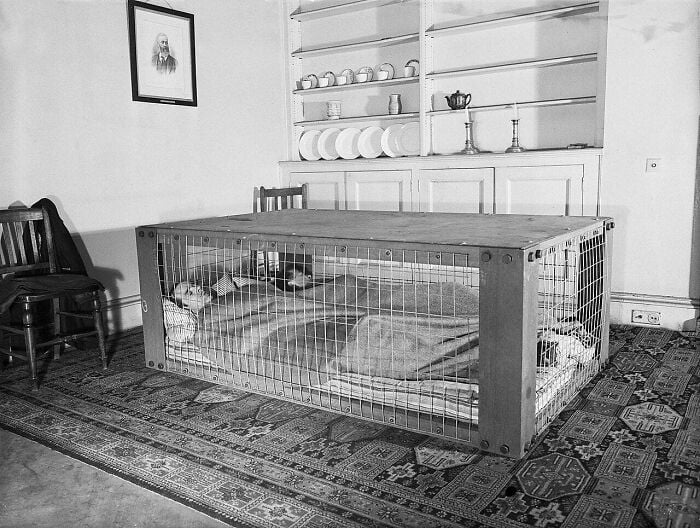
Imgur
The Morrison shelter was a type of air raid shelter measuring 6 feet 6 inches long, 4 feet wide, and 2 feet 6 inches high. It was named after Herbert Morrison, who was then the UK’s Minister of Home Security. Morrison shelters were provided for free to households with a combined annual income of less than £400.
The Dry Cleaning Business That Staffed Firefighters
The person in the photo is not a Roman soldier but a member of the Achille Serre Ladies Brigade in action. Achille Serre, a Frenchman who came to England with his wife Eugenie in 1870, pioneered the “dry cleaning” method in the UK.

Imgur
At its peak, Serre’s dry cleaning business, Achille Serre Limited, had more than 1,700 employees and over 400 outlets across the UK. The company even had a fire brigade that was staffed primarily by women.
Log Lodge Tavern
In the 1940’s, Dallas was in a tizzy about the sudden fad of “scantily-clad” female carhops. In an effort to level the playing field a group of men decided to step in.

These men dressed in shorts and cowboy boots were photographed serving a car of women at a drive through in Dallas, Texas at Log Lodge Tavern.
When McDonald's Was a Barbecue Joint
On May 15, 1940, in San Bernardino, CA. brothers Maurice and Richard McDonald opened a barbecue joint at 14th and E streets that eventually became the burger-and-fries restaurant that propelled the fast-food concept worldwide

With no indoor seating and just a handful of stools at its exterior counters, the establishment employed female carhops to serve customers who pulled into its parking lot ready to eat.
Giving New Meaning to "Mobile Home"
This photo shows an entire house being relocated, a fairly common practice in the United States in the late 19th century up to the early 20th century. Some families resorted to doing this as they lacked the resources to build a new house where they moved.
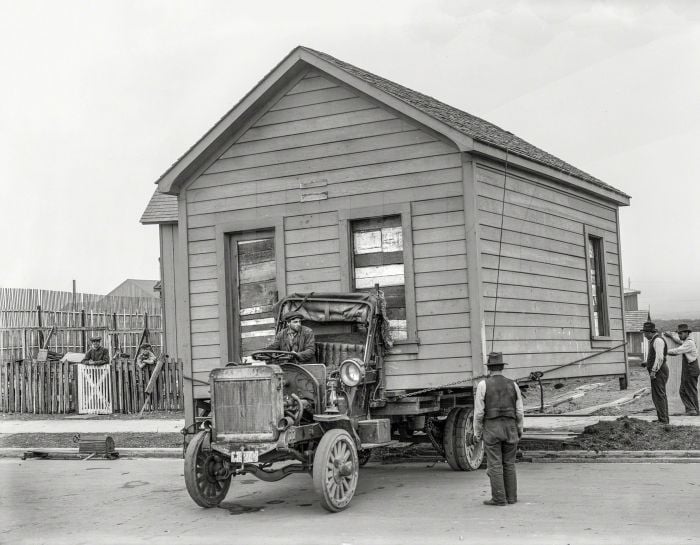
Life was tough for many people at the time, even for those living in major cities like San Francisco. Problems like crop failure, famine, high taxes, and job shortages often led to much movement between cities or states as people searched for a better life.
Mid-flight Snacks
In the late 1960’s Scandinavian Airlines offered ‘smørrebrød’ service in their Economy Class. Scandinavian Airlines stated in their ads, “On our planes you won’t find rubbery indigestibles, wrapped in cellophane.”

Pinzor
Passengers loved the idea, and naturally, competitors hated it. Major competitors like American airlines, Trans World Airlines and Pan Am, objected the new ads stating that it gave Scandinavian Airlines an unfair advantage.
Stocking Shortage Inspires Women to Paint Their Legs
As women’s hemlines rose in the 20th century, so did the demand for stockings. In the 1920s and 1930s, stockings were typically made of silk or rayon. By the early 1940s, however, nylon stockings had become more popular.
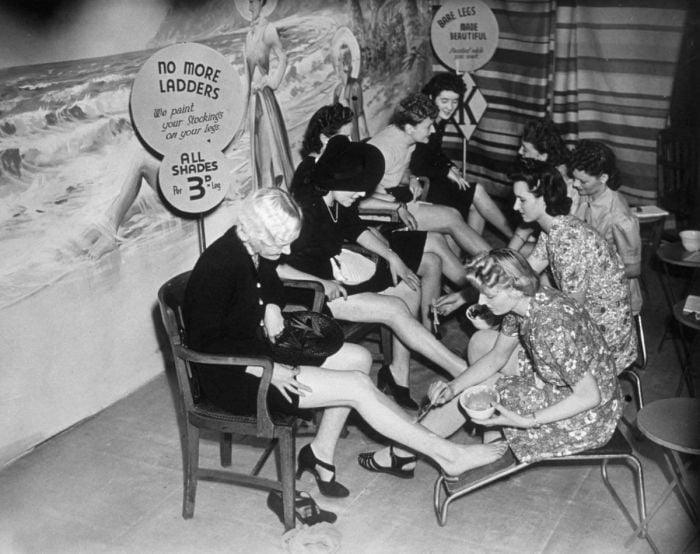
Imgur
After the United States joined the Second World War, the production of nylon was diverted for military use, resulting in a shortage of nylon stockings. As a solution, women had their legs painted to replicate the appearance of stockings, a trend that continued even after the war.
Free Babysitter
This Mom got clever when she decided she needed to take a moment for herself. While needed to take a second for herself, she used what she had within arms reach to keep her baby safe, an empty trash bin.

In the 1960’s this wouldn’t have been a very big deal, but image going to a park today and witnessing the same thing. Most people, present day would view this as some form of child abuse.
Portable Changing Booths, 1938
There’s nothing like a nice swim at the beach to cool off on a hot summer’s day. Unfortunately, this is also when beaches tend to get super busy. Changing rooms are most likely overcrowded, and the ones that aren’t are probably too far away.
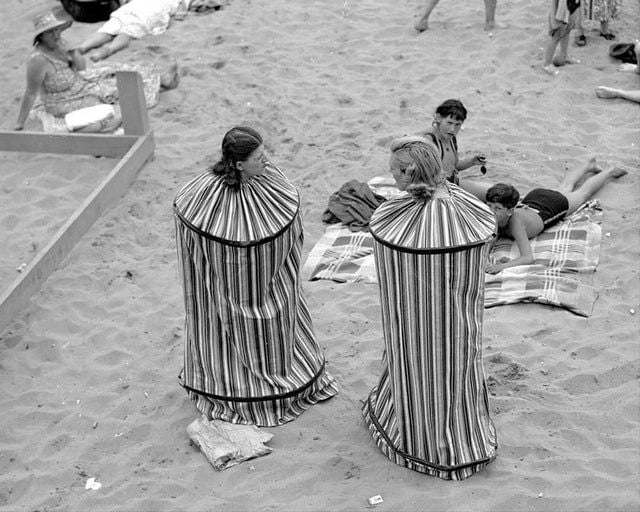
Imgur
These two women at Coney Island in New York City seem to have found a solution: portable changing booths. These portable changing booths are lightweight and easy to set up, allowing anyone using them to get changed anywhere while maintaining some privacy.
Waking People Up For a Living
During the Industrial Revolution when alarm clocks were neither affordable nor reliable, many people in Britain and Ireland relied on men and women known as “knocker-uppers” to wake them up every morning so they wouldn’t be late for work.
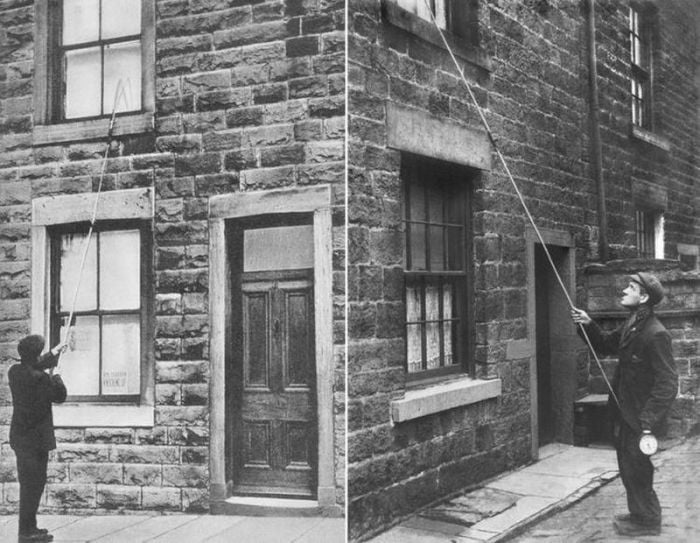
Imgur
Knocker-uppers knocked on people’s windows using either batons, short sticks, or long bamboo sticks. Knocker-uppers, who were typically paid a pence a week, had largely disappeared by the 1950s, though some neighborhoods in England still had them until the early 1970s.
Old-Fashioned Swimming Lessons
Learning how to swim requires lots of patience and hard work, not just on the part of the student but the teacher’s as well. Any parent who’s ever taught their child how to swim can surely attest to that.
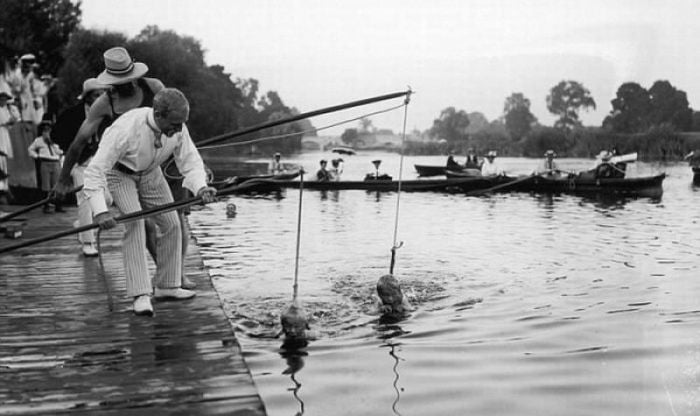
Imgur
This photo, taken in the early 1900s, shows a father using a rather unusual method to teach his child how to swim. This method has two major benefits: first, he can avoid getting wet; second, he can easily pull his child out of the water in case something goes wrong.
A Baby in a Baby Cage
Many people would be horrified by this sight today, but babies in cages suspended from city apartment windows were a fairly common sight in many large cities across America and in the UK in the first half of the 20th century.
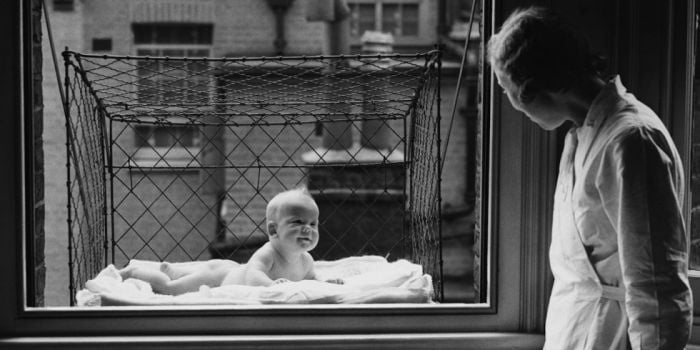
Imgur
These so-called baby cages, or health cages, were intended to allow babies to enjoy some fresh air and sunshine. However, the popularity of baby cages declined by the mid-1900s, likely due to safety concerns, and high pollution levels caused by an increase in automobile traffic.
Flying Southwest in the 1970s
The airline industry has evolved so much over the years. For one, stewards and stewardesses are now usually referred to as flight attendants. Flight attendants’ age restrictions have also been modified, and policies that prohibited marriage and pregnancies have largely disappeared.
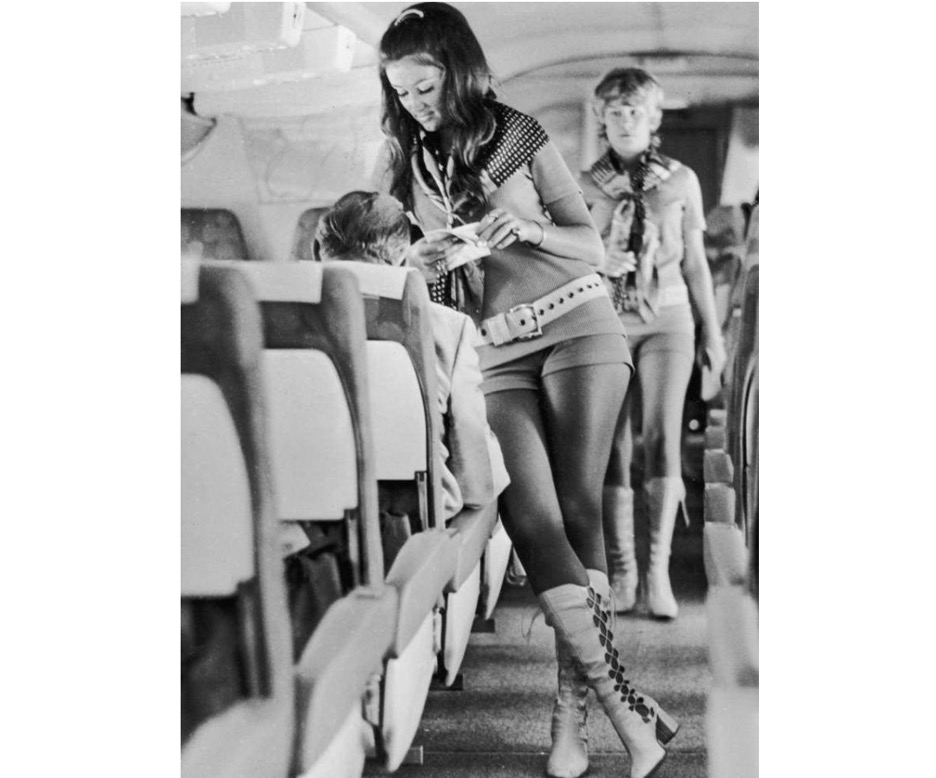
Imgur
In the 1970s, Southwest Airlines’ female flight attendants were made to wear hot pants and go-go boots as part of their uniform, something that probably wouldn’t fly today (pun intended). At the time, the airline also served drinks with suggestive names like “Love Potion” and “Passion Punch.”
Women at a Hair Salon, 1937
The first hair dryer was invented by French stylist Alexander Godefroy in 1890. His invention – which consisted of a bonnet that was attached to the chimney pipe of a gas stove – required several hours of use to achieve the desired effect.
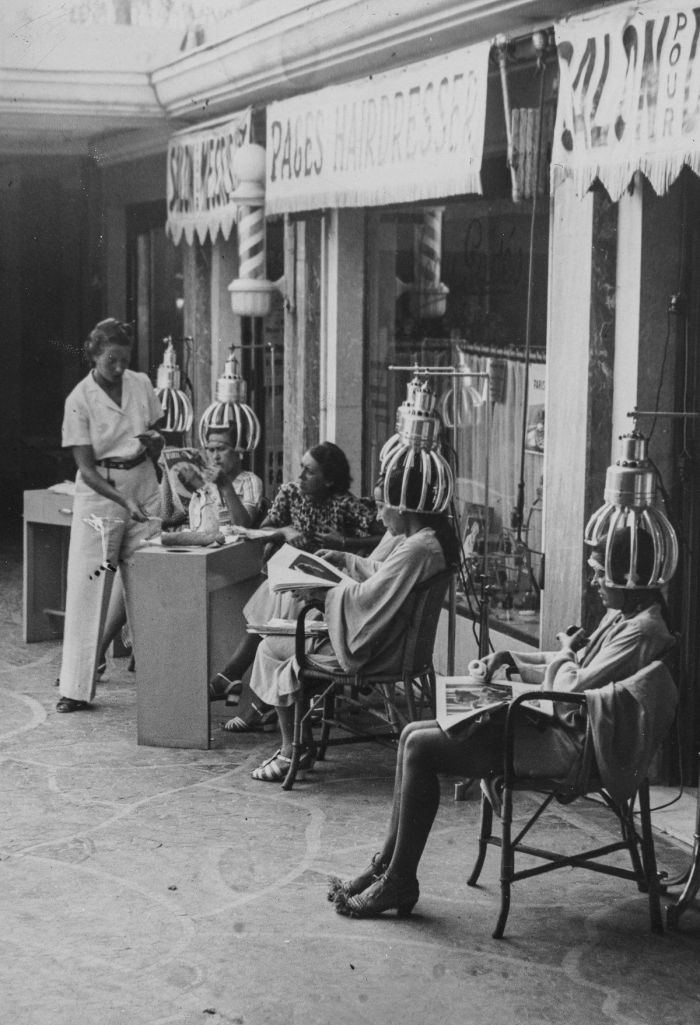
Imgur
Handheld hairdryers first hit the market in 1920. Nevertheless, large hairdryers – particularly the rigid-hood hairdryers that were first introduced in the 1950s – are still a common sight at hair salons around the world.
This image features a german general named Anton Dostler. He’s being tied to a stake for his execution by a firing squad. It was taken in Italy in December of 1945.
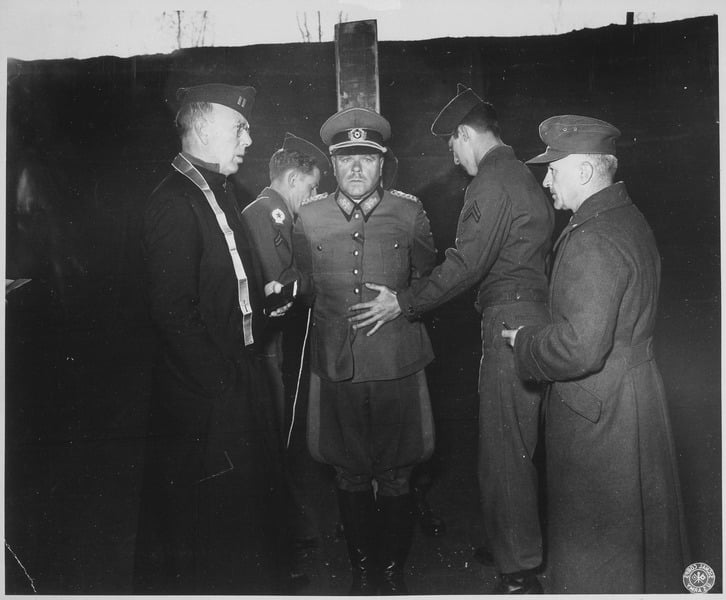
Source: wikimedia
He was convicted and sentenced to death by the American military troops. He fought in both world wars and was executed because of war crimes he committed.
A Robot Vacuum From 1959
The Robo-Vac, a precursor to today’s autonomous vacuum cleaners, was unveiled in 1959 as part of Whirpool’s Miracle Kitchen of the Future display at the American National Exhibition in Moscow. Like today’s robot vacuums, the Robo-Vac uses sensors to find its way around a room.

Imgur
The American National Exhibition was held from the 25th of July to the 4th of September, 1959. The Cold War event, which attracted more than three million visitors, was an opportunity for American companies to showcase their products, which included anything from home appliances to cars and farm equipment.
Tupperware Party in the 1950s
Tupperware is a brand of kitchen products – mainly plastic food containers – developed by Earl Silas Tupper in 1946. In the 1950s, Brownie Wise, a single mother from Florida, started throwing “Tupperware parties” to promote and sell Tupperware products to friends and neighbors. This caught the attention of Tupper, who then made Wise Tupperware’s vice president of marketing.

Imgur
At a time when a woman’s role was generally tied to the home, Tupperware parties became a way to empower women as it allowed them to build a career in sales. The tradition of throwing Tupperware parties continues to this day.
Hauling Barges and Other Vessels in Russia
From the 17th to 20th centuries, landless or poor peasants in Russia would crowd along river banks to await the arrival of barges or mid-sized vessels. These peasants known as burlaks would then be paid a small amount to haul the boats upstream using their bodyweight.

Imgur
Burlaks were often part of an artel (a cooperative association) with four to six other burlaks, though some artels were composed of as many as 150 burlaks. The number of burlaks started to decline at the start of the Industrial Revolution. By the beginning of the 20th century, burlaks had practically disappeared.
A Drive-in Cinema in the 1950s
Drive-in cinemas may be an uncommon sight these days, but they were a vital part of American culture in the 1950s. Drive-ins offered customers the ability to watch a movie from the privacy and comfort of their cars. The first drive-in cinema was opened in Las Cruces, New Mexico in 1915.
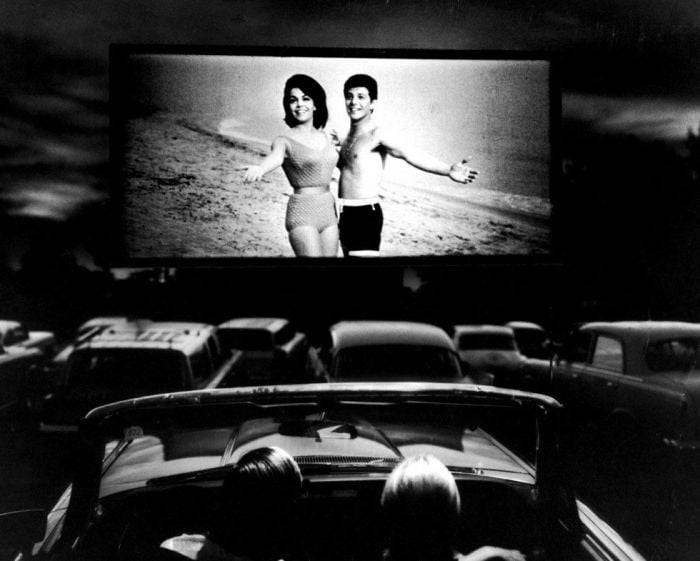
Imgur
Drive-ins are relatively easy to set up. All that is needed is a large lot, a projector, a wall that’s painted white, and large speakers, though some drive-ins also use individual speakers placed beside each parked car.
Vintage "Selfies"
Before we were uploading our filtered faces to Instagram and we carried high-tech cameras in our phones, cameras were bulky, slow shuttering, and heavy. This selfie, with an antediluvian analog camera, is being held at arm’s length with the help of two men.
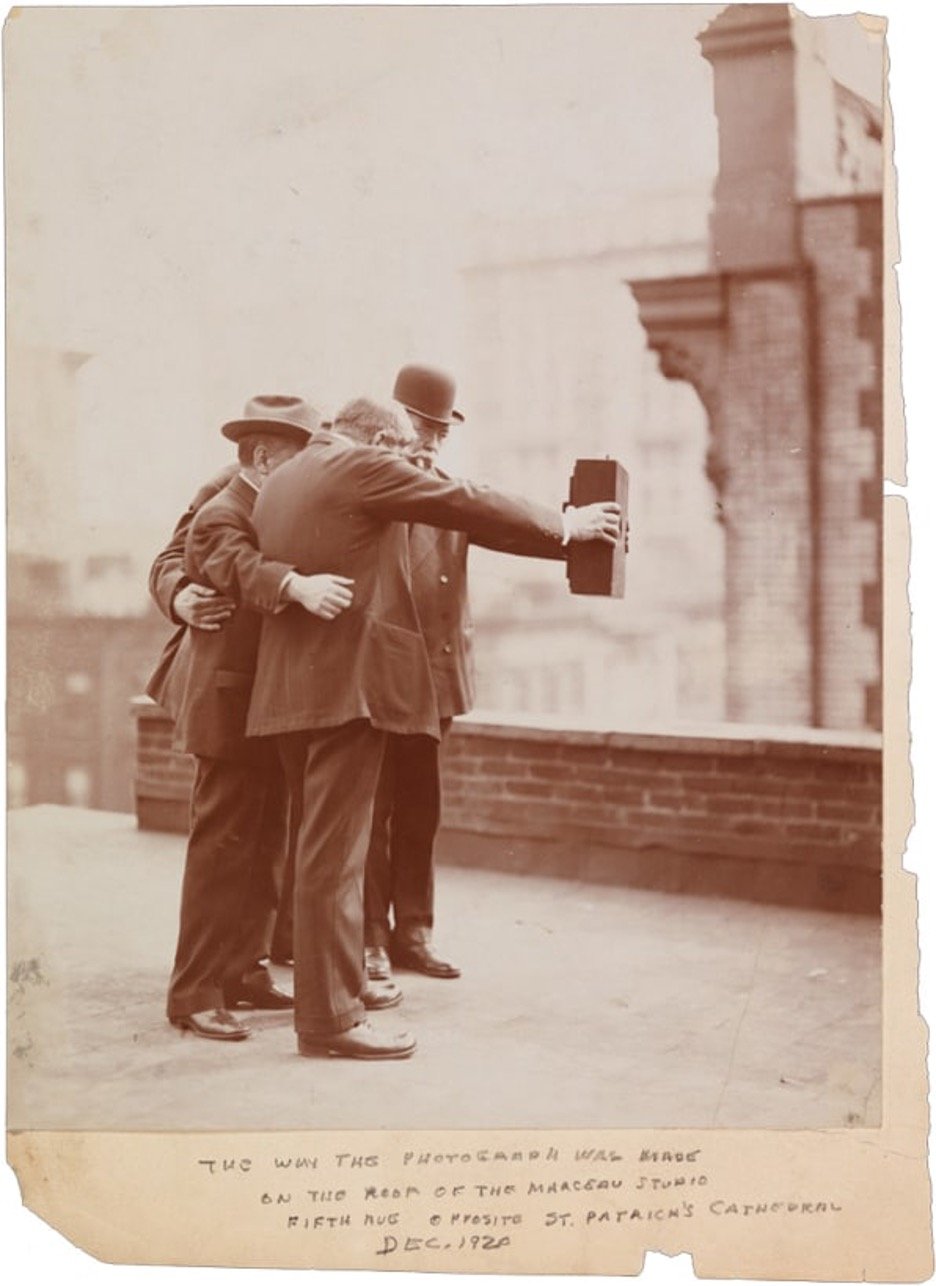
Source: Fast Company
These selfies were more experimental photography more so than tools of self-promotion. The first selfie was referred to as a self-portrait at the time and is credited to Robert Cornelius in 1839.
Roller Skates From 1910
Roller skates were first introduced in 1760 by Belgian inventor John Joseph Merlin, but it wasn’t until the invention of the “rocking” skate by American James Plimpton a century later that roller skating became a popular activity.
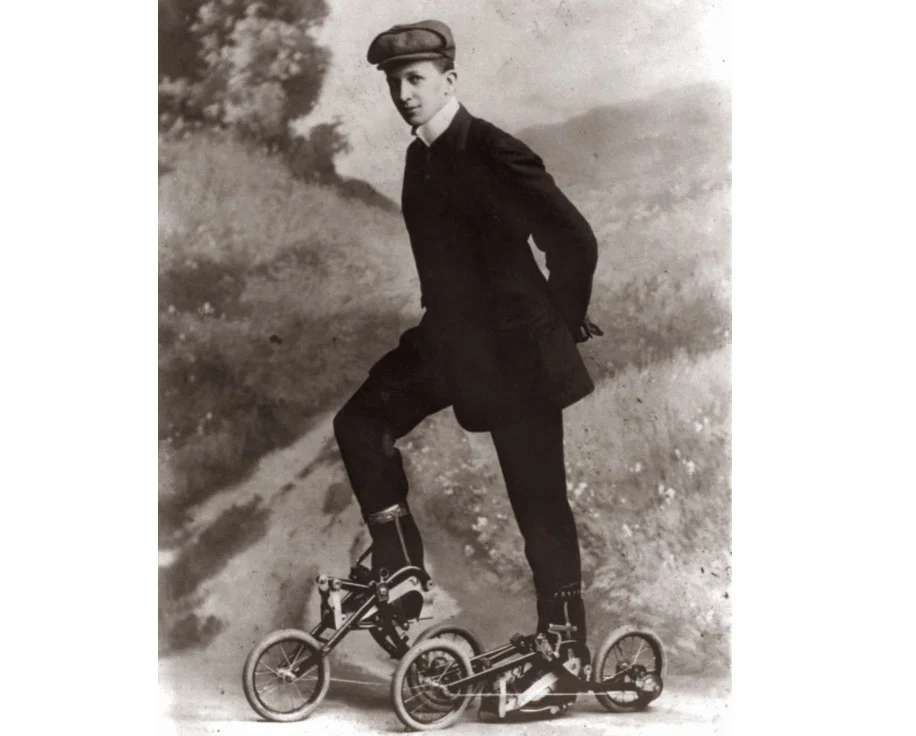
Imgur
Roller skates have had numerous iterations over the years. In the 1900s, Swedish inventor Edvard Petrini invented the Takypod, a type of roller skate that is driven by pedaling. While Takypods could have been a great alternative to the bicycle, these were never mass-produced.
Milkmen in the 1960s
Milkmen were once a common sight in neighborhoods throughout the US, much like paperboys or mailmen. Close to 30 percent of US consumers opted to have milk delivered to their homes in the early 1960s.

Imgur
However, the need for milk delivery decreased over the years as household refrigerators became more common. By 1975, less than seven percent of consumers had milk delivered. By 2005, this number dropped further to 0.4 percent. These days, only a handful of companies still offer milk delivery services in the US.
How New York City’s Tunnels Were Monitored
Before traffic cameras became commonplace, the Port Authority of New York and New Jersey (PANYNJ) used little cars known as catwalk cars to patrol New York City’s tunnels. Pictured here is a catwalk car in the Lincoln Tunnel, which connects New Jersey and Midtown Manhattan.
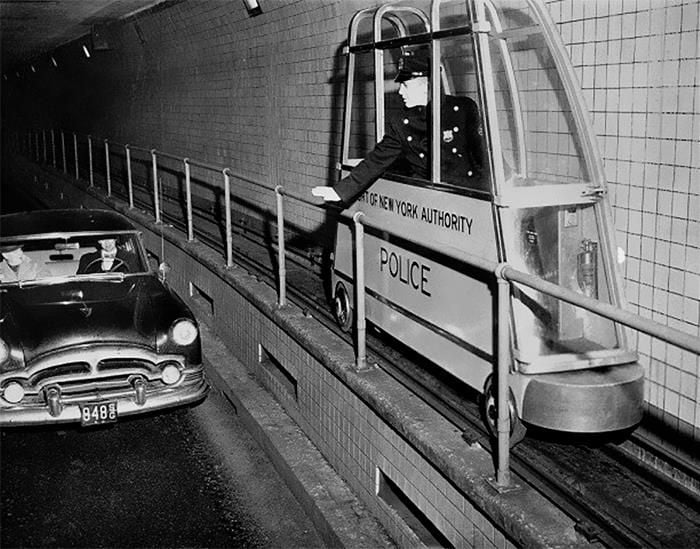
Imgur
The catwalk cars had a dedicated track and could reach speeds of up to 35 mph. These zippy little cars were first used in 1955 and were retired in 2011. By that point, catwalk cars were mostly being used for maintenance purposes.
Testing a Football Helmet, 1912
We still have a long way to go in helmet innovation and protecting athlete’s brains from the constant impact of clashing skulls. Still, when this photo was taken, the problem was much greater.

It is clear from the photo that the bystanders watching the “experiment” are enjoying this guy’s strategy in testing the helmets durability.
Victorian Faces of the Dead
During the Victorian Era, there was a grim tradition that involved family photos. Death was unfortunately very common with diseases such as tuberculosis so family members would pass away tragically young.

Source: Daily Mail
They would prop up the bodies of the dead family members to pose for family photos so they could have the dearly departed photographed and memorialized. The sentiment is nice but awfully creepy!
The Boombox
Decades before Apple introduced the iPod in the early 2000s, companies like General Electric, Marantz, Panasonic, and Sony produced a device known as the boombox. These transistorized portable music players delivered sound through their large speakers and an amplifier.
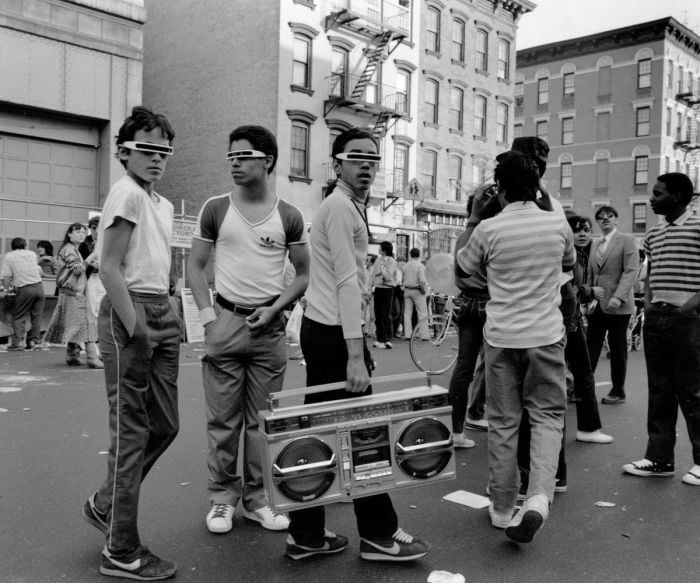
Imgur
First introduced in the 1970s, the boombox quickly became a symbol of urban society in the United States, particularly African American and Hispanic youth in large metropolitan areas like New York and Los Angeles. The boombox also became associated with hip hop culture and played a key role in the rise of hip hop music.
First Video Game Tournament Hosted by Atari
Video games have come a long way since the launch of the first consumer video game, Computer Space, in the early 1970s. What was once a niche hobby has now become a highly-profitable industry, with estimated annual revenues of well over $100 billion.
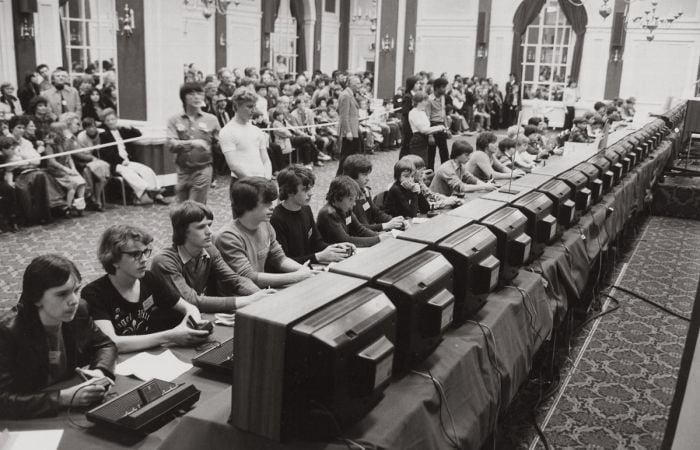
Imgur
American video game developer Atari, Inc. hosted the first-ever large-scale video game tournament, the Space Invaders Championship, in 1980. The tournament attracted over 10,000 registered participants from across the United States, helping push competitive gaming into the mainstream.
A Radio Program in the 1940s
Before television was invented, the radio was the dominant home entertainment medium. During the so-called Golden Age of Radio from the early 1920s to the 1950s, families gathered to listen to the radio in the evening.
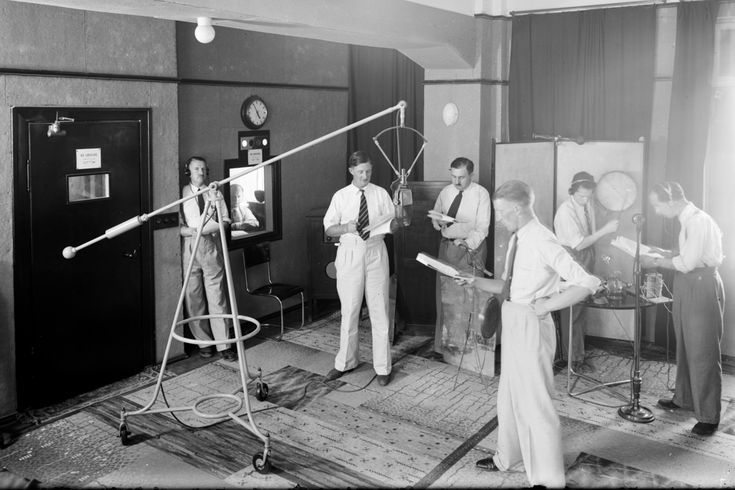
Imgur
The invention of the radio gave rise to a host of new entertainment genres and formats, many of which would migrate to television later on. Radio dramas, which relied on dialogue, sound effects, and music to help listeners imagine the story and the characters, enjoyed widespread popularity from the 1930s until the 1960s.
Stockholm’s Gigantic Telephone Tower
In 1886, Stockholm, the capital city of Sweden, had more telephones than any other major city in the world. A year later, Stockholms Allmänna Telefon AB ordered the construction of an 80-meter telephone tower in the city, allowing the connection of 5,500 telephone lines.
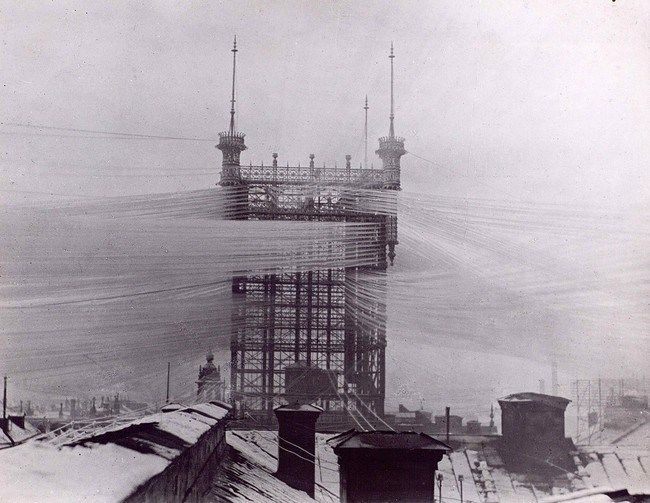
Imgur
By 1913, the tower was made obsolete by the increasing use of underground cables in urban areas. The tower was severely damaged by a fire in July of 1952 and was demolished a year later on safety grounds.
Supersonic Airliner
Flying via the Concorde aircraft was expensive, but it could take you to your destination in style. The aircraft also traveled at twice the speed of sound. This means that a traveler from London could easily get to New York in just three hours, much faster than the seven hours it would take to travel between the two cities on other aircrafts.
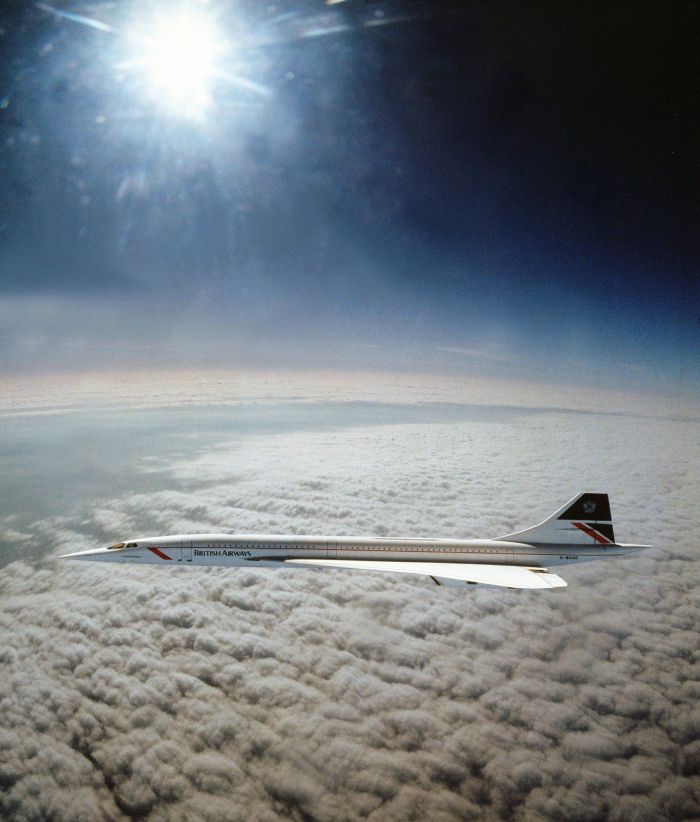
Imgur
However, the global downturn in air travel following the September 11 attacks, the crash of Air France Flight 4590, and the lack of maintenance support led to the aircraft’s retirement in 2003. The only other supersonic aircraft to operate commercially was the Soviet-built Tupolev TU-144.
Detecting Threats Before Radar
Radar has been an absolute game-changer in terms of helping defense forces prepare for and respond to an attack by enemies. Thanks to radar, it has become much easier to know the location and speed of an incoming object, whether it’s aircraft, ships, or even missiles.
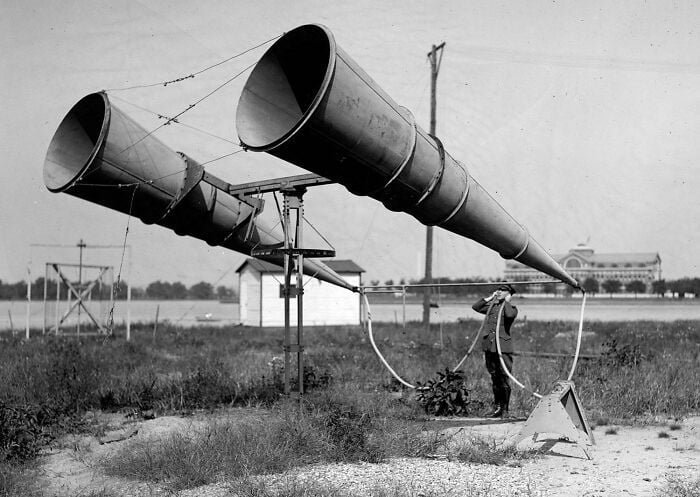
Imgur
Before radar became widely used, defense forces had to rely on listening devices that looked like giant trumpets. These devices, which helped detect approaching aircrafts by amplifying sounds in the air, were first used by Britain and France during the First World War.
A 1930s Mickey Mouse Costume
Mickey Mouse is a cartoon character that was created by Walt Disney in 1928. Mickey, created as a replacement for another Disney character called Oswald the Lucky Rabbit, has since become one of the world’s most beloved fictional characters and has long been a popular fixture at Disney theme parks.
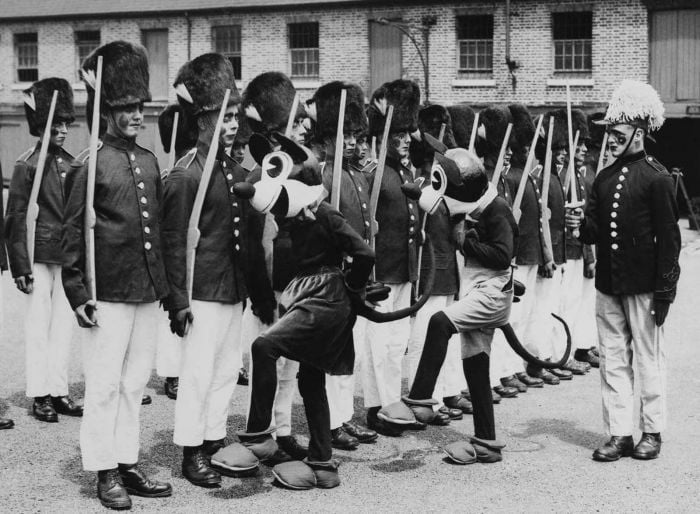
Imgur
The Mickey Mouse costume has gone through several design changes over the years. Earlier versions, like the ones from the 1930s, have often been described as “creepy” or “unsettling,” a far cry from the friendlier-looking costumes that we see now.
The Texaco Doodlebug
In the 1930s, Texaco introduced the Texaco Doodlebug, a futuristic-looking tanker truck. While the Doodlebugs did what they were supposed to do – carry gasoline to and from gas stations – they were also a publicity stunt to modernize Texaco’s brand look.
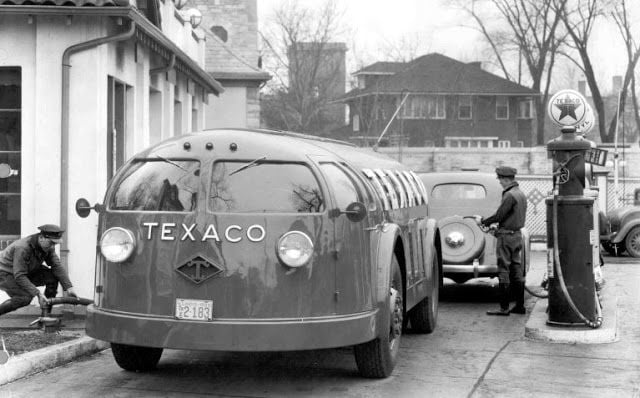
Imgur
The exact number of Doodlebugs produced is unknown, though some sources claim that only six units were ever made. Due to its shape, some people at the time said that the Doodlebug reminded them of either a pill or a loaf of bread.
Electric-Powered Street Cleaners
In the early 20th century, the streets of the city of Berlin were cleaned with the help of electric-powered heavy-duty wagons that roamed the city. Believe it or not, electric-powered vehicles have been around a lot longer than you think.
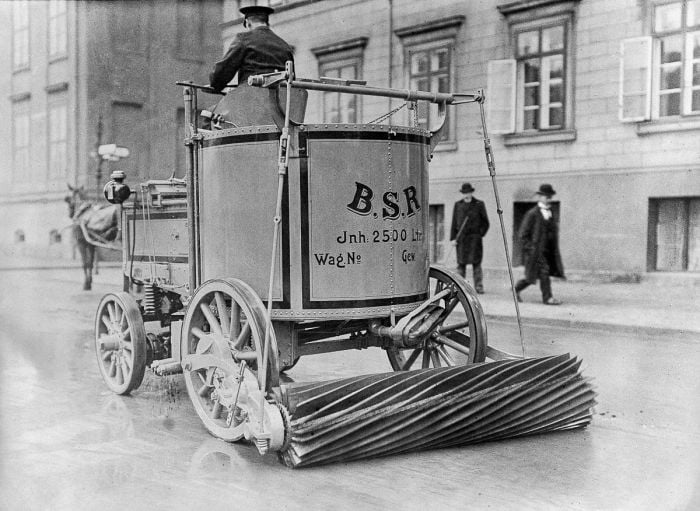
Imgur
Since the 19th century, electric vehicles have been a known and viable mode of transport, though they were not necessarily the fastest. Electric vehicles eventually fell out of favor as consumers shifted to cheaper, oil-powered cars. It wasn’t until decades later that electric cars would become popular again.
Lancia Stratos Zero in Turin, Italy
The Lancia Stratos Zero was a concept car by Italian car manufacturer Lancia. First unveiled at the Turin Motor Show in 1970, the Stratos Zero was designed by famed car designer Marcello Gandini and featured a 1.6 L Lancia Fulvia V4 engine.
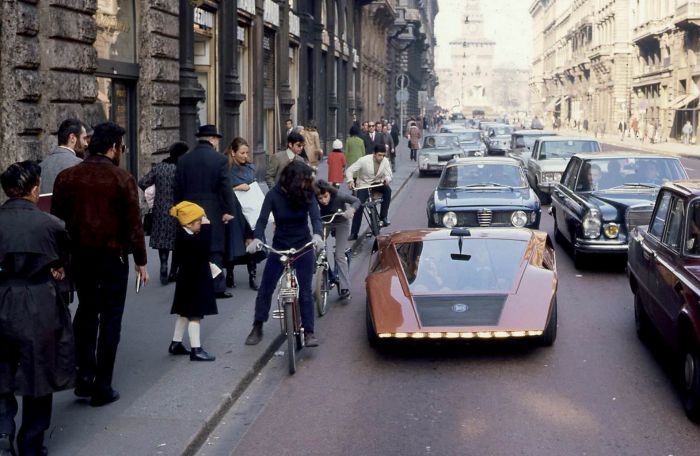
Imgur
The car’s odd design captured the attention of car enthusiasts worldwide. It was even featured in the 1988 movie Moonwalker, which starred Michael Jackson. However, the car was thought to be too dangerous due to its size and shape, so it was rarely seen on the road.
Early Diving Suits
The first individual diving suits were designed in the early 18th century when ships carrying valuable treasures were often lost to the ocean on dangerous journeys. By the early 20th century, diving suits had become more sophisticated, making it possible for explorers to dive deeper into the ocean.
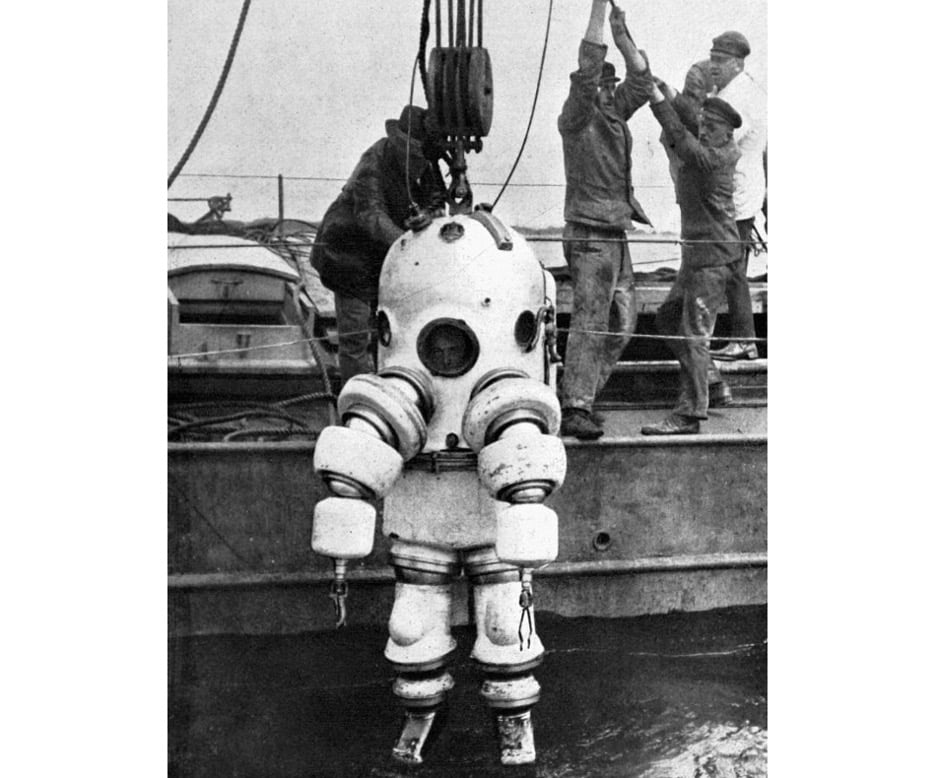
Imgur
In the 1920s, German company Neufeldt and Kuhnke built metal diving suits that were used to recover gold and silver bullion from the wreck of SS Egypt, a British ship that sank in the Celtic Sea in 1922.
Unveiling An Airship
In the early 20th century, airships were believed to be the future of commercial air travel. The US, Germany, and Britain developed large airships that were equipped with amenities like lounges, dining areas, and passenger cabins.
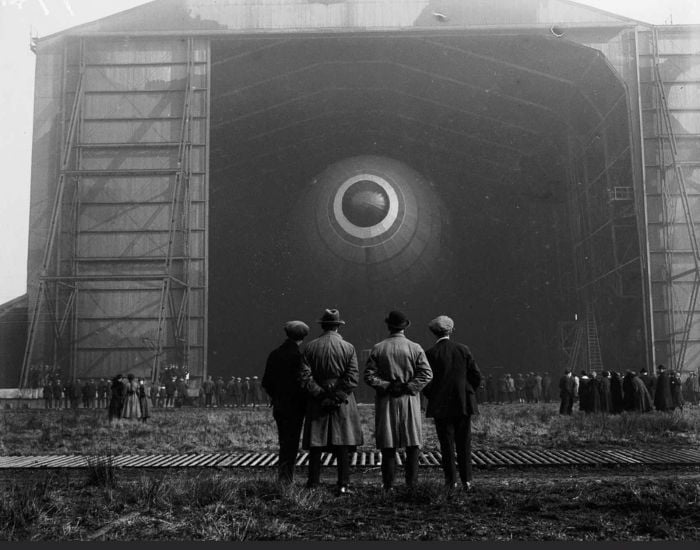
Imgur
Unfortunately, a series of high-profile incidents, like the 1930 crash of the R101, the 1933 crash of the USS Akron, and the 1937 Hindenburg disaster led to the decline in the airship’s popularity. These days, airships and blimps are mainly used for other purposes like advertising, sightseeing, and research.
Vintage Magic
Magicians of the old world such as Harry Houdini (pictured below) thrilled audiences for their world-bending tricks. What is interesting about this time in human history is the way Houdini took up arms against the Spiritualist movement of the time, which had mediums claiming to be in touch with the spirit world.
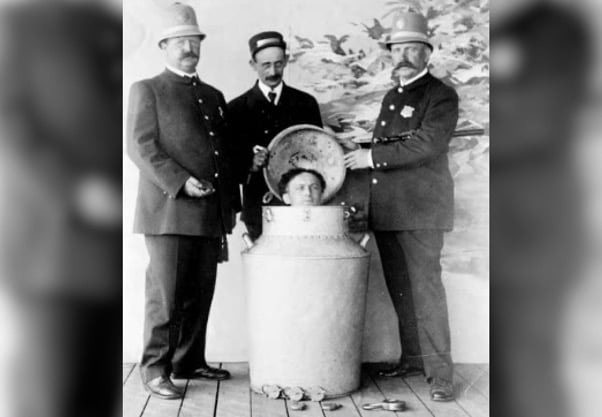
Source: Picryl
The early 1920’s, which was in the wake of World War One, had many were seeking solace in contacting passed loved ones. Houdini vehemently pushed back against this and saw it as exploitation.
A Monocycle From the 1930s
A monocycle is a motorized version of the monowheel, a single-track vehicle that was invented in the late 19th century. Rather than sitting above the wheel as in unicycles, the rider is seated either within the wheel or right beside it.
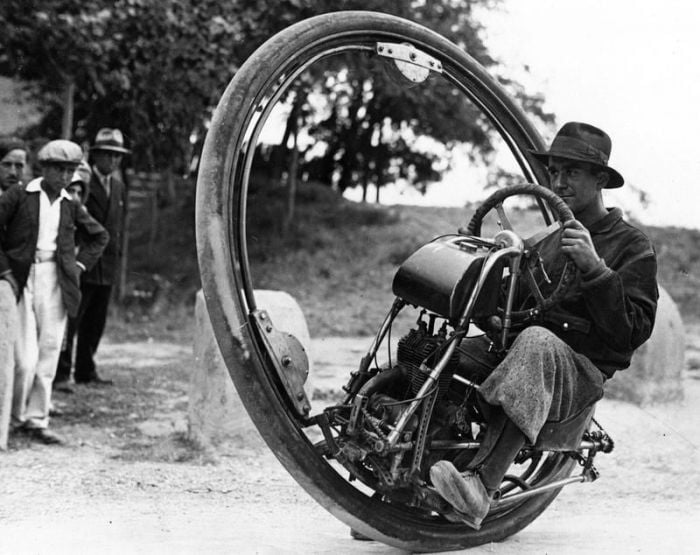
Imgur
Monowheels and monocycles were once thought to be a viable mode of transport, but there were several problems inherent in their design that couldn’t be overcome, like the lack of stability, visibility issues, and the risk of “gerbiling.” These days, monowheels and monocycles are generally built and used for entertainment.
Fiat’s Factory in Turin, Italy
The Lingotto building in Turin, Italy was inaugurated in 1923 and originally housed a Fiat factory. The cars were built on an assembly line that went up through the building. Finished cars were then tested on the test track at the building’s rooftop level.
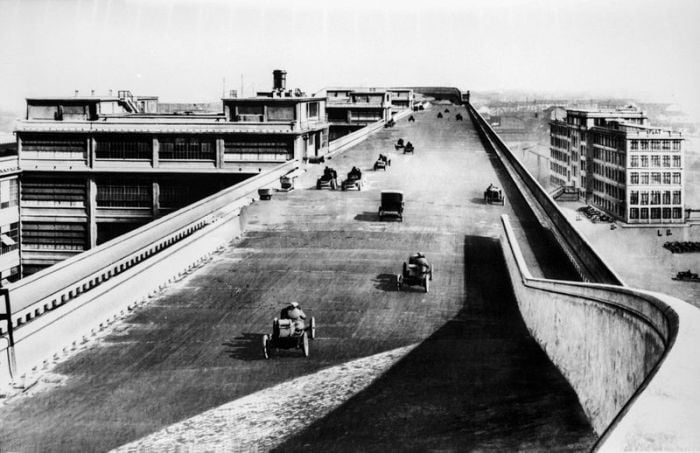
Imgur
The factory was closed in 1982, and the building was later transformed into a modern complex with two hotels, concert halls, a convention center, offices, and retail space. In 1997, Fiat moved its administrative headquarters to the building.
The Fairchild K-17 Camera
The Fairchild K-17 was a large camera designed by Fairchild Camera and Instrument Corporation and manufactured under license by Folmer Graflex for the US Air Force. These cameras were mainly used to do aerial photography during the Second World War.
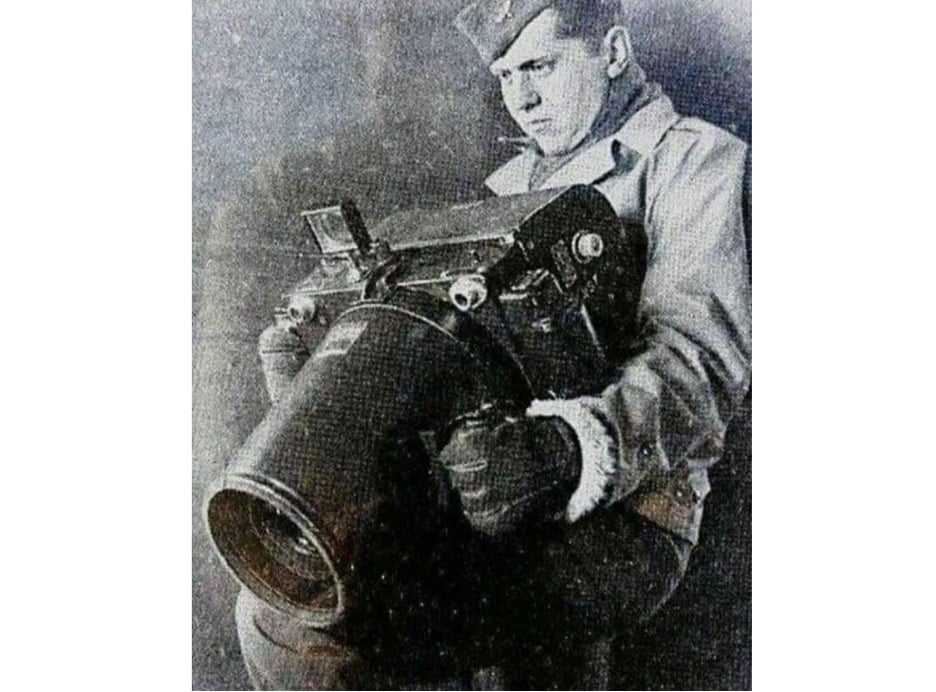
Imgur
A Fairchild K-17 camera with a 12” lens cone and full magazine weighed around 55 pounds, while a K-17 with a 24” lens weighed a whopping 75 pounds. Another camera that was used for a similar purpose in the 1940s was the Kodak K-24.
Riding the Rotor
The Rotor is an amusement park ride that was designed and patented by Ernst Hoffmeister, a German engineer, in the late 1940s. The ride is a large barrel that is rotated at 33 revolutions per minute. Once the barrel reaches its full speed, the floor retracts, leaving the riders stuck to the wall due to the force.
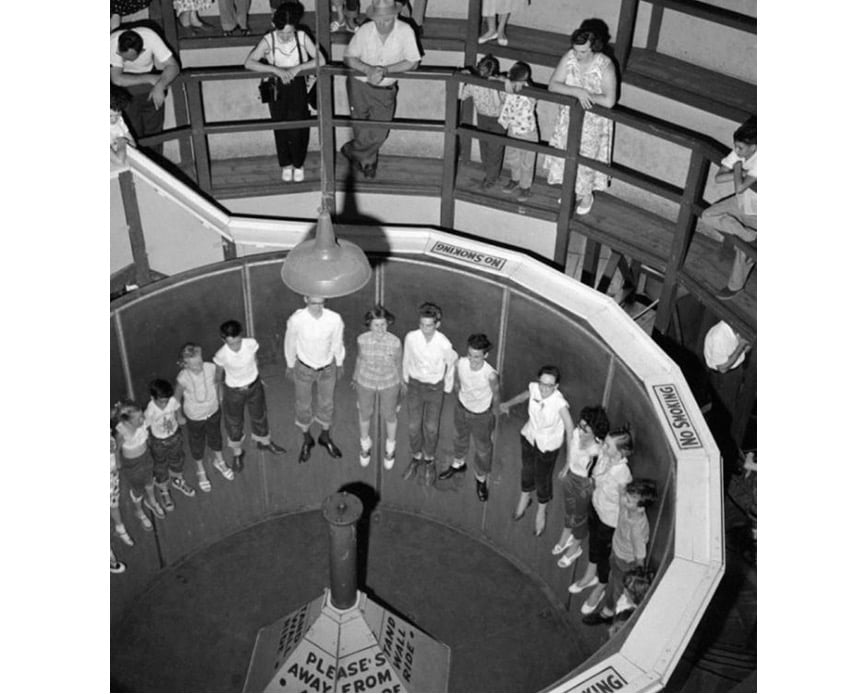
Imgur
Rotors have been built at numerous amusement parks in Australia and the US since the 1950s, including this one at Kennywood in West Mifflin, Pennsylvania. This photo was taken in 1955.
Michelin Man on Tour
Bibendum, also known in English as the Michelin Man or Michelin Tyre Man, is the official mascot of the French tire manufacturing company Michelin. First unveiled to the public in 1898, Bibendum was created by French cartoonist Marius Rossillon, also known as O’Galop.

Imgur
This photo shows Bibendum on tour in 1926. Before televisions became common and billboards were a rare sight outside of city centers, businesses like Michelin would go on tour to advertise their products. Mascots like Bibendum were an integral part of the tour, often to attract young children.
Two Daredevils Play Tennis
This photo of two people playing tennis on the wings of an airplane may seem fake, but this did happen. Two daredevils, Gladys Roy and Ivan Unger, performed this stunt 3,280 feet above Los Angeles in November of 1925.
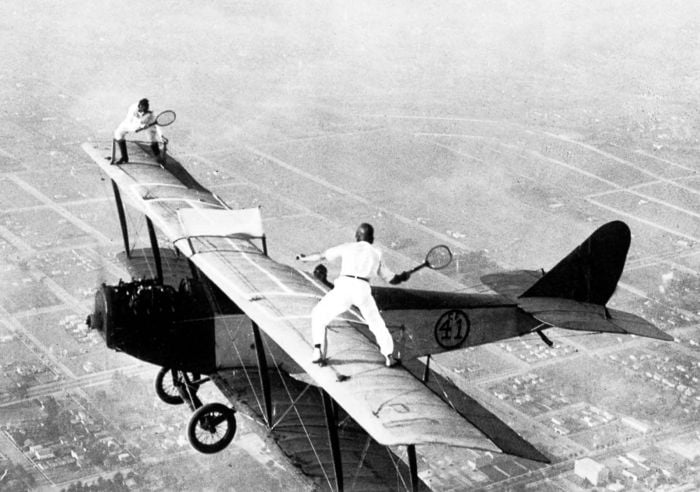
Imgur
Both Roy and Unger were “wing walkers” or “barnstormers” who regularly performed similar stunts at various events across the United States. This particular stunt was performed on the wings of a Curtiss JN Jenny plane piloted by Jack Tomac.
Healing Through Mechanotherapy
Swedish physician and orthopedist Dr. Gustav Zander envisioned a world where physical injuries or diseases could be rehabilitated and healed through mechanical means, going against the notion that the use of drugs was necessary for treatment.
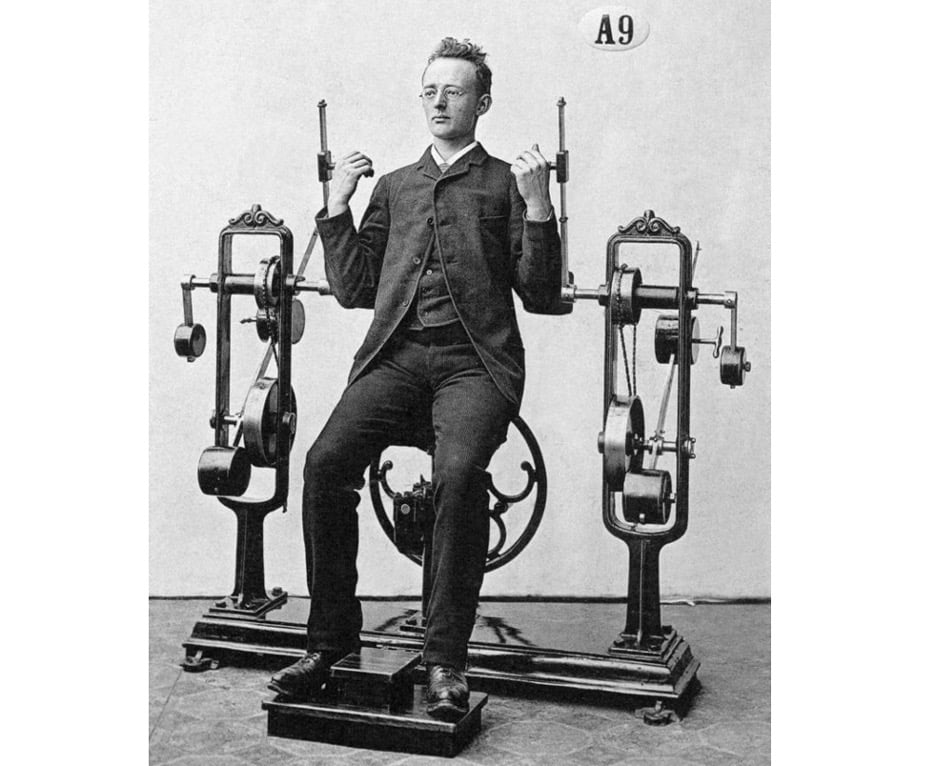
Imgur
In the mid-1800s, Dr. Zander developed a range of machines aimed at correcting various ailments and physical deficiencies. These machines – the predecessors of modern gym equipment – would go on to win a gold medal at the 1876 Centennial Exhibition in Philadelphia.
The Inter Autoscooter
The microcar, the smallest type of car, first appeared on the streets of Europe after the Second World War. Microcars typically had three or four wheels and were usually equipped with an engine that was smaller than 700 cc. Microcars quickly became popular across Europe as they were cheap and had greater fuel efficiency than regular cars.

Imgur
Shown here is the Inter Autoscooter, a microcar that was unveiled to the public at the 1953 Paris Motor Show. The Inter was built by SNCAN, a state-owned French aircraft manufacturer based in Lyon.
Photo Editing in the 1860s
In 1860, then-presidential candidate Abraham Lincoln had a problem: many voters had no idea what he looked like, and the media and his political opponents often made fun of his looks, describing him as “vulgar,” “uneducated,” and “grotesque in appearance.” As a solution, he turned to photographer Mathew Brady to manipulate his photos that would later be distributed to the public.

Imgur
Following Lincoln’s death in 1865, portrait painter Thomas Hicks superimposed the late president’s head onto the body of John C. Calhoun and created a print. For a century, no one noticed that the print was faked.
An Old School Arcade
Before home video game consoles took off, gamers flocked to amusement arcades where people played arcade games, including video games, pinball machines, redemption games, electro-mechanical games, claw machines, billiards, air hockey, and more.
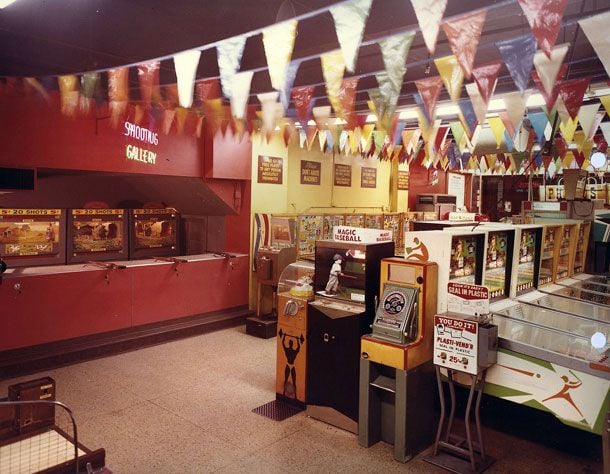
Imgur
Amusement arcades trace their origins to penny arcades – a venue for coin-operated devices for entertainment – that began to emerge in the early 1900s. Massively-popular video games like Space Invaders, Galaxian, and Pac-Man were introduced to arcades in the late 1970s to early 1980s, a period that would later be dubbed as the “Golden Era of Arcade Video Games.”
An Old Library Tool
Before the internet, the library was everyone’s go-to place for research. People would spend countless hours browsing the shelves and searching through books, journals, and magazines to find the information they needed.
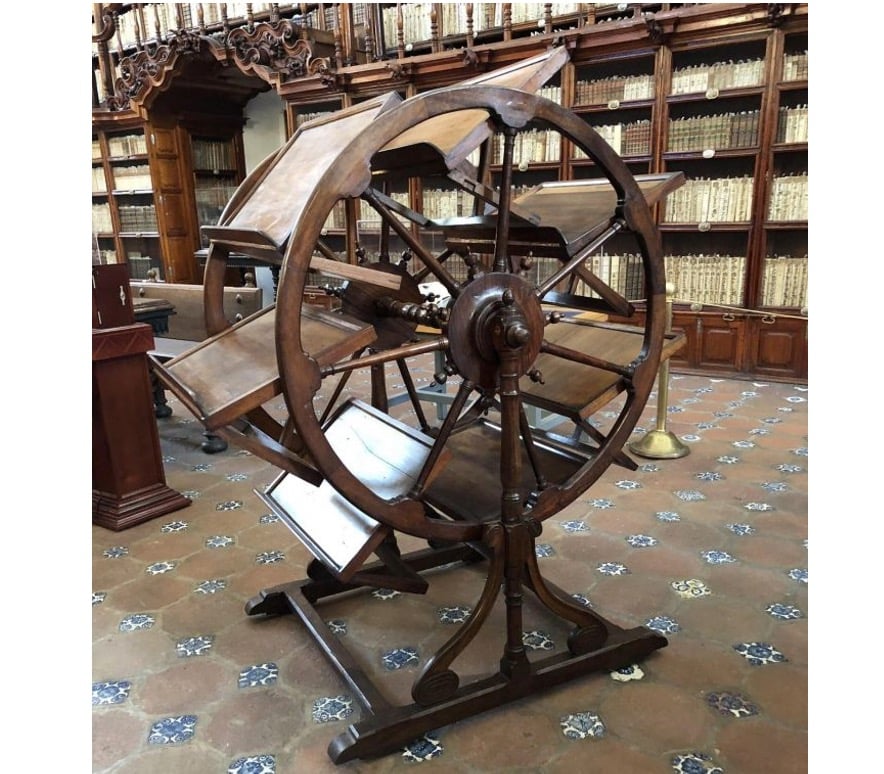
Imgur
This 300-year-old library tool, on display at the Biblioteca Palafoxiana in Puebla, Mexico, allows its users to keep multiple books open at once. Much like today’s internet browsers, anyone using it could easily switch between “tabs” (books), saving them from the hassle of having to shuffle through multiple volumes at different tables.
Air Travel Attire
Nowadays, most of us slap on a pair of sweats or leggings and hustle out the door to go through the long preflight process that we’ve all become accustomed to. However, before air travel was standard–during the golden age of commercial aviation, people dressed to the nines for their travel.
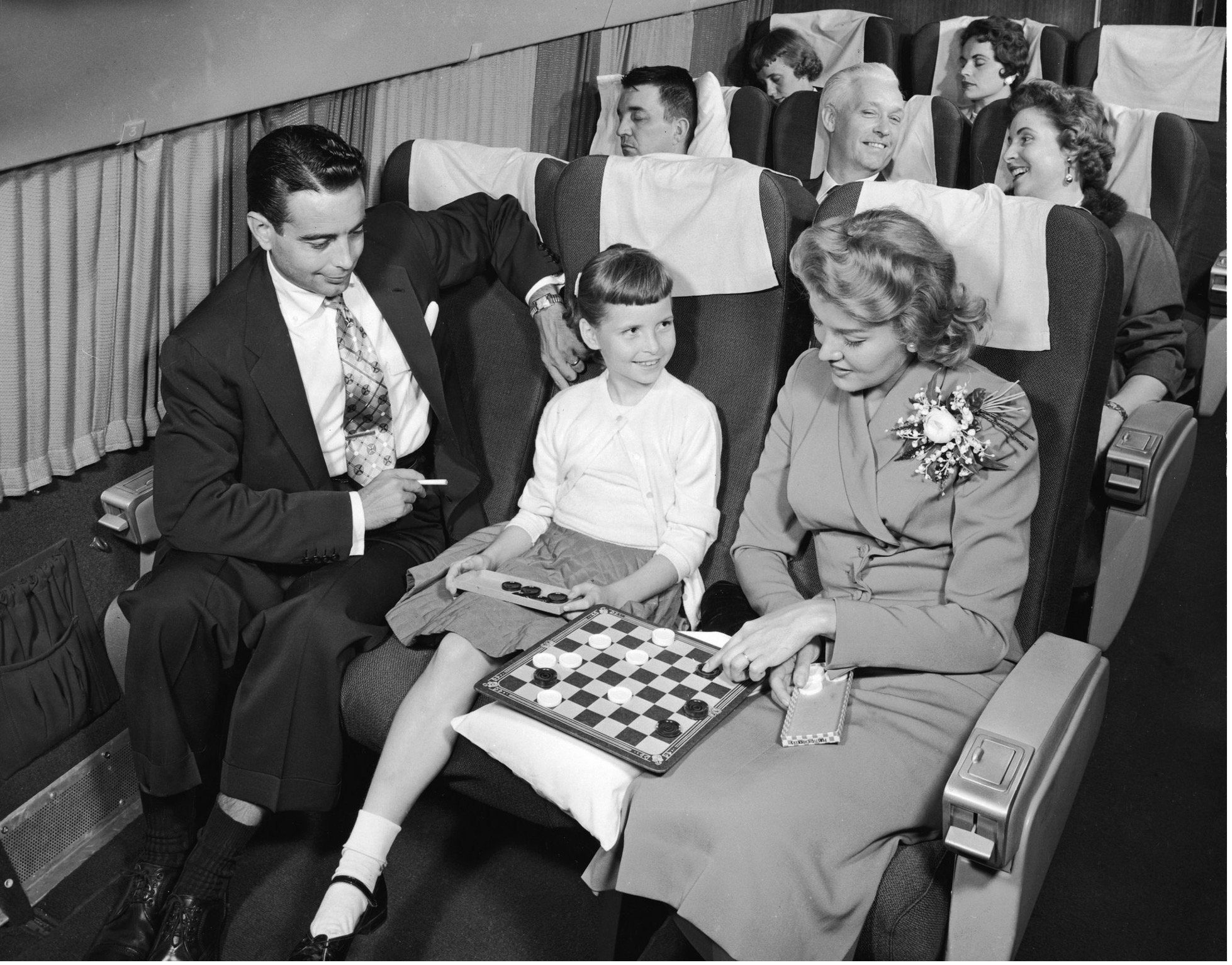
Source: New York Times
Taking a flight was a big deal and was viewed as a luxury. The glitz and glamour were a part of the experience, with air hostesses, well-stocked bar carts, and meals served on fine china.
Travel By Ship
Before planes, people traveled via ships. During the end of the 19th century, many emigrants traveled on iron hulled steam ships to the Ellis Island port in the United States. These transatlantic liners would carry 1900 people, with about 500 of those being. employees, and about 1100 steerage passengers. The rest were “cabin class” passengers.
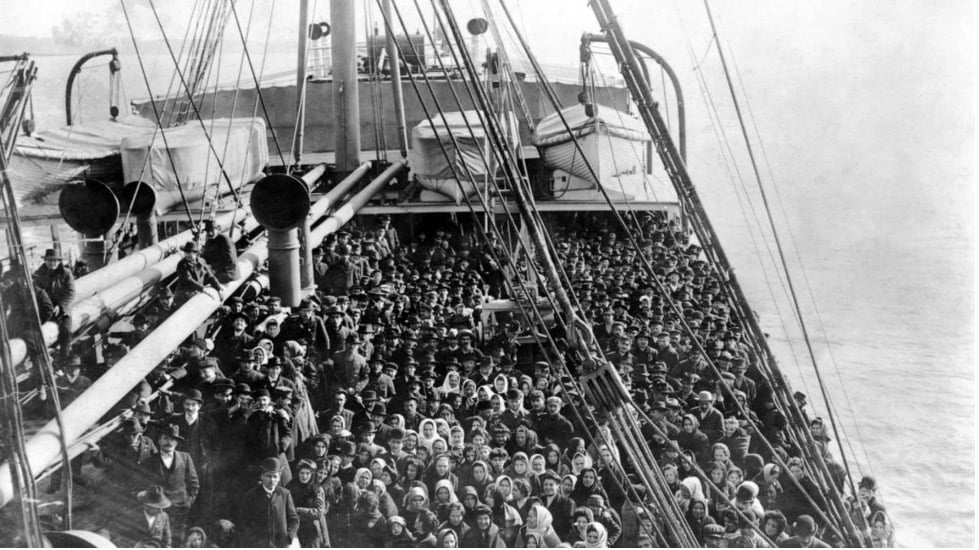
Source: History.com
Steerage was smelly, noisy, stuffy, and offered limited privacy. For first class passengers, it was a luxurious experience with saloons, ballrooms, and top-quality dining.
Public Telephone Booths
Prior to most everyone in modern civilization having a cell phone at their fingertips, phone booths were a standard part of the cityscape. To make a call, you inserted your coin and dialed your desired call through the rotary dial.
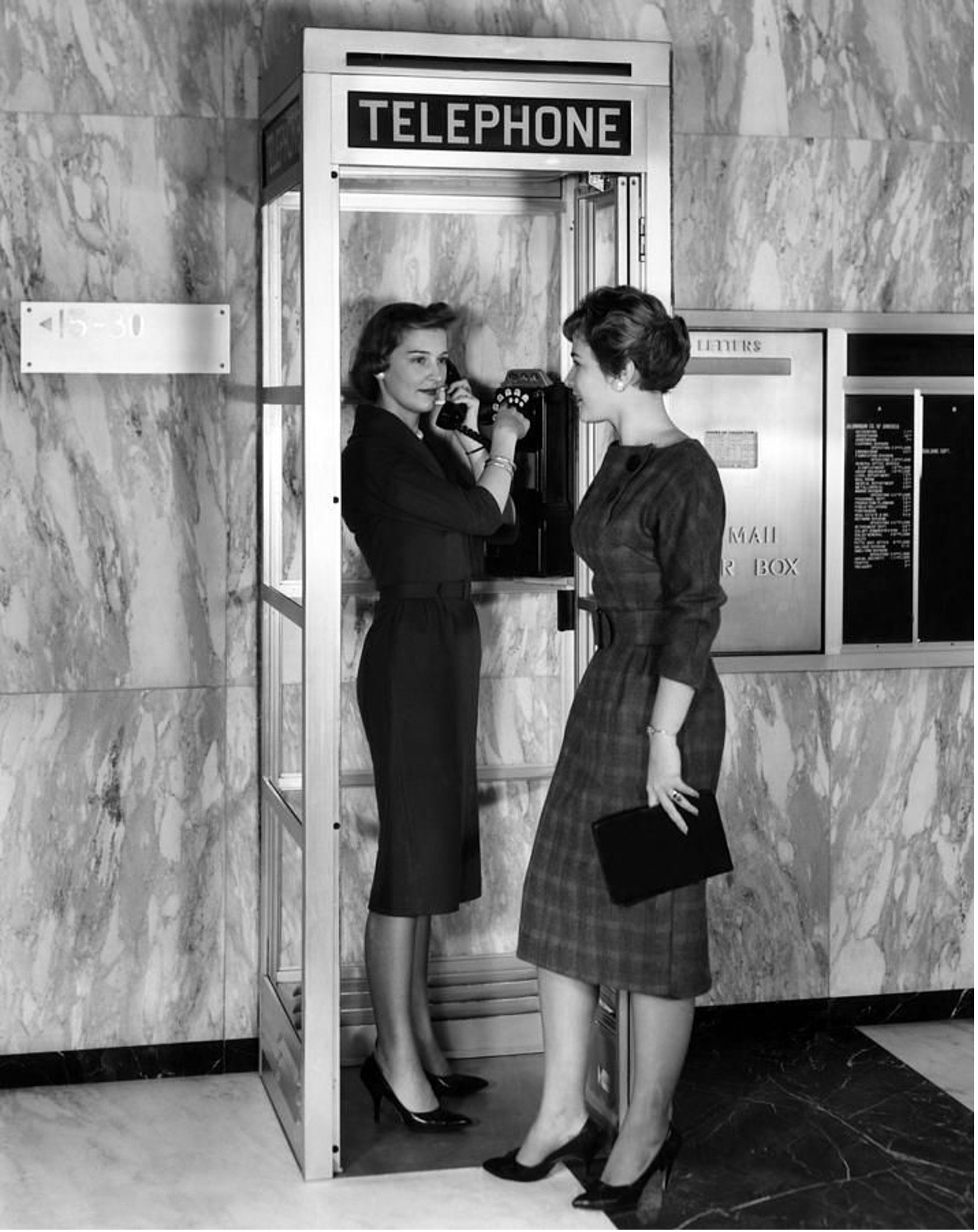
Source: Pintrest
It was standard practice to wait your turn as someone made their call on their way to work or to catch the bus. It is hard to imagine in a world that is way more tailored to our specific needs, isn’t it?
Old World Bikes, Penny-Farthing
Penny-farthings were the first machine to be called a “bicycle” and were popular during the 1870’s and 1880’s. The large front wheel provided high speeds (since every rotation of leg gave considerable distance) and comfort (owing to the large wheel providing greater shock absorption).
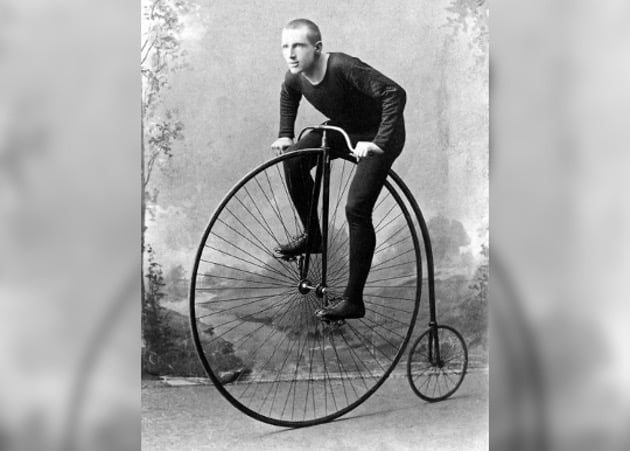
Source: National Geographic Kids
The name hails from the British penny and farthing coins and the differing sizes of the two coins. Although the trend of the penny-farthing bicycle was short lived, it did become a staple of the Victorian era.
Horse Buggy as the Main Mode of Transport
In today’s modern world, high-performance cars can have upwards 700 horsepower, however in the 1800’s it was just a few horses and a buggy as the primary means of transportation.

Source: Calisphere
Transporting people and goods was a costly feat in the 19th century as animals required large quantities of food and water and the roads were primarily bumpy dirt roads. Now contrast that with the trailers full of horses we now are able to haul.
First New York Fashion Week
The first ever New York Fashion Week took place in 1943 and took place with the nearing of World War 2. Though fashion shows had been a part of culture and society, the New York Fashion Week was the first of its kind in grandeur and scale.
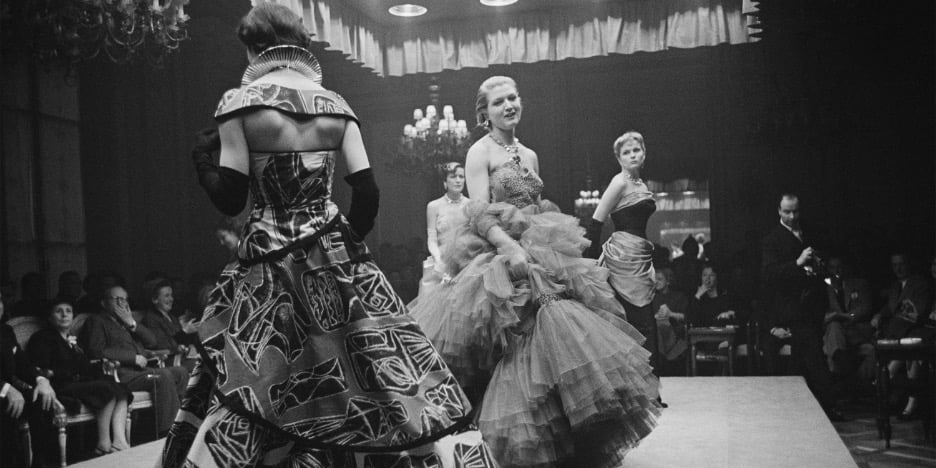
Source: Harper's Bizarre
The legacy that followed would come to represent style and fashion for decades to come and marks social elitism on an international scale.
Corsets
Corsets would typically be worn as under or outer wear in an effort to raise and shape the breasts, tighten the midriff, support the back and make the woman stand up straight.

Source: Click Americana
The earliest known corsets appear in the 16th century and have been used for centuries within tribes within the Caucasus, but we mostly think of corsets as garments worn by the English. Contrast corsets with the shapewear that we have today and it certainly shows the way we’ve evolved and also how we have stayed the same.
The Very First NASCAR Race
The first NASCAR race took place on February 21st, 1949, at the Charlotte Speedway in North Carolina. There were about 13,000 fans on hand watching the 200-lap race.

Source: nascarmoms.com
NASCAR’S earliest races featured the pre-World War 2 models of the 1939 Ford Coupe and were raced on dirt roads with what may be considered a sparse crowd compared to today.
First Rocket From Cape Canaveral
In July of 1950, NASA launched their first rocket from Cape Canaveral, Florida. At the time the rocket reached a new record height and went even higher than the current orbit of the International Space Station.

Alamy
The rocket was named Bumper II, and it would be the first of many rockets to launch from Cape Canaveral.
A Frozen Niagara Falls
Niagara Falls is the celebrated natural phenomenon that has awed generations of viewers for decades. This photo from the early 1900’s shows the Niagara Falls waterfall completely frozen over.

Pocket Link
Although this is a spectacular sight this is an occurrence that actually happens quite regularly.
Borden's Dairy
By the 1920’s Borden Company expanded at a rapid rate.They acquired two of the largest ice cream manufacturers in the United States by adding cheese to their product offerings and by acquiring a chemicals company.

Between 1927-1930, Borden bought more than 200 additional companies around the U.S. and became the nation’s largest distributor of fluid milk. In 1936, the company introduced Elise the Cow as the Borden brand’s mascot.
Built-In Record Player
The Columbia Records “Highway Hi-Fi” was the must-have accessory for the any self-respecting car owner. Even the celebrities got in on the latest trend.
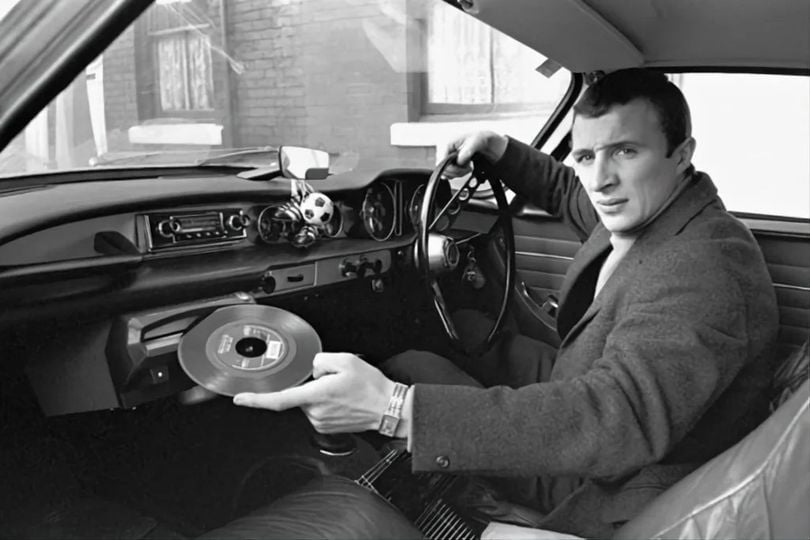
Manchester City player Mike Summerbee can be seen above showing off his 1967’s Volvo P1800 with a built-in record player.
Under Construction
On January 28, 1887, the construction of the Eiffel Tower first began. 2 years, 2 months and 5 days later, the iconic tower was finished. This was considered to be done in record time, as it was a veritable technical feat.

On March 31, 1889, it was officially opened to the public. The Eiffel Tower today is one of the world’s most visited monuments, receiving around 7 million visitors a year.
Sun Bathing Machine
In 1949 during the annual Vending Machine Convention in Chicago, Betty Dutter, (famous model at the time) demonstrated how to use a Sun Bathing Machine.

Dutter, explained that how in just 30 seconds and the cost of only a dime, an individual could get a full spray job with the Sunbathing Machine.
No Safety Rail
Safety standards in the 1960’s we frankly not that high. The photo above goes to show just how relaxed the rules and regulations were when it came to standardized safety precautions.

This Mom is just using her arm to keep her daughter seated while going up the side of a mountain. No safety belts or rails in sight.
Medicine’s Most Incredible Moments
In 1922, at the University of Toronto, scientists went to a hospital ward with children who were comatose and dying from diabetic keto-acidosis. The scientists went from bed to bed and injected the children with the new purified extract – insulin.
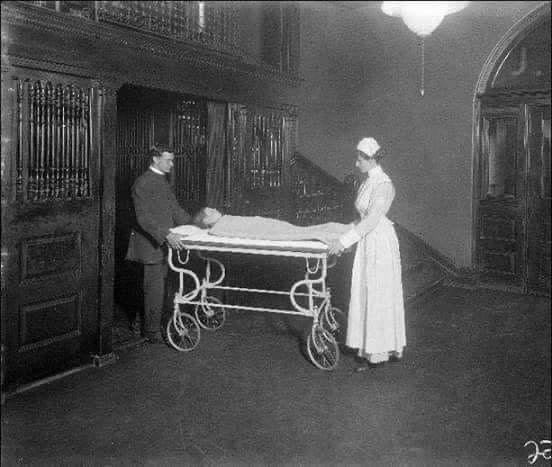
As they began to inject the last comatose child, the first child injected began to awaken. One by one, all of the children awoke from their diabetic comas. A room of death and gloom, became a place of joy and hope.
Princeton Tradition
Before the turn of the 20th century, it was a yearly tradition for freshman and sophomore Princeton University students to have a snowball fight. This famous photo shows three students with bruised and battered faces after the 1893 fight.

The reason it looked as if the three students just left the boxing ring verse coming from a snowball fight is because students were known to pack rocks inside their snowballs. That’s why the colleges upperclassmen didn’t join in, they knew better.
Garbage Trucks of the Past
As most have witnessed, garbage people rarely must exit the truck to pick up and deport the trash from our front yards. However, this was not always the case. Before garbage trucks became mechanisms of ultimate deployment, they were simply massive storage trucks.

Source: Pintrest
The old school ways required the garbage people to exit the car and move the trash from the front yard into the trash tank. Furthermore, it was much smaller and did not cover nearly as much area as modern-day garbage trucks.
'Golden Girl' Actress Bea Arthur Photographed as U.S. Marine, 1944
Bea Arthur from the NBC hit Golden Girls is photographed here as a United States marine. She served in 1943. A few decades later she would go on to star as Dorothy Zbornik opposite Betty White, Rue McClanahan, and Estelle Getty.
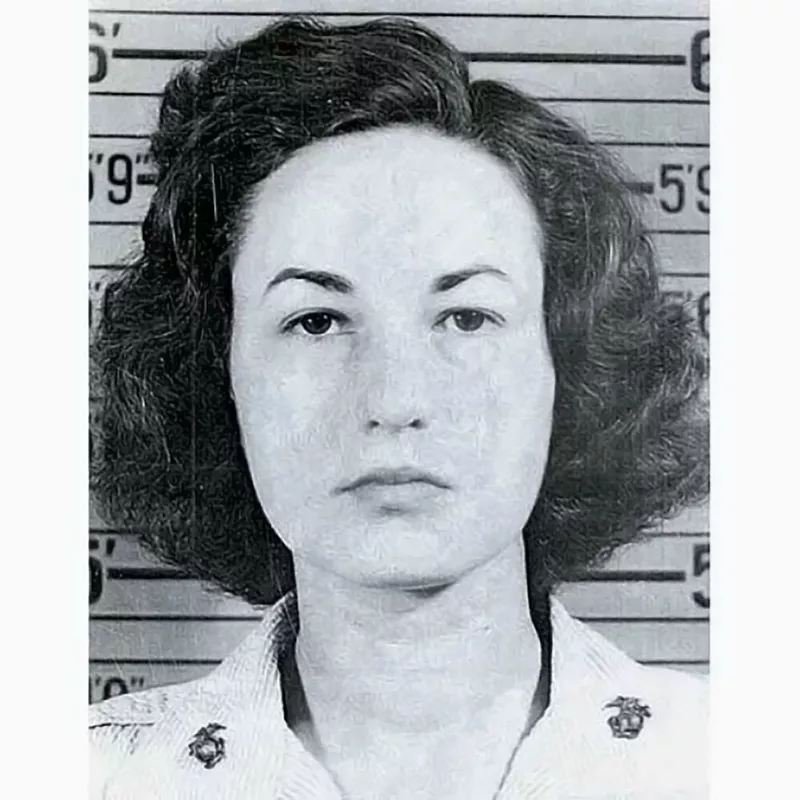
The show aired from 1985 until 1992. Prior, Bea worked for the Marine Corps as a driver in dispatcher in Cherry Point, North Carolina from 1944-1945 before pursuing a career on stage in 1947.
A 1930s Roadside Stand in Alabama
A roadside stand is pictured somewhere in 1930s Alabama. In the photograph you’ll notice two young boys standing proudly with their pumpkins.
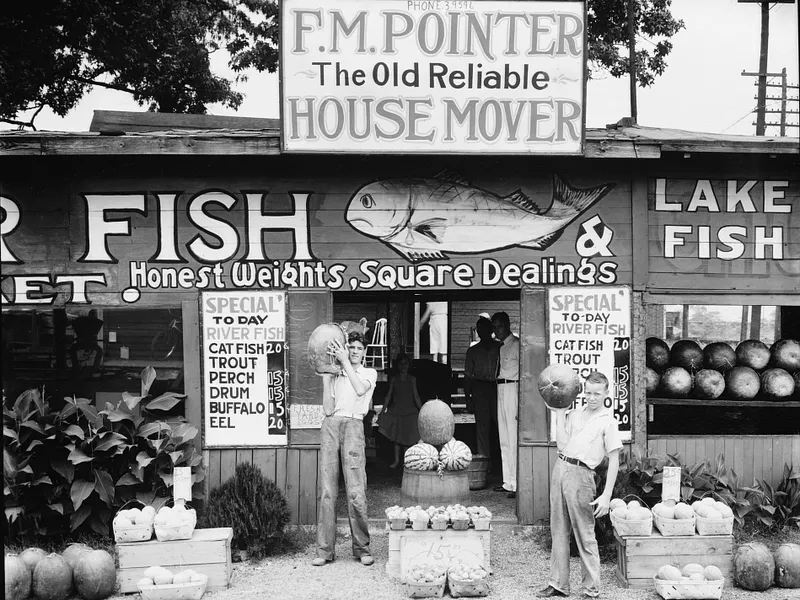
The roadside stand seemed to sell a host of fresh fish, buffalo, eel, along with a bunch of other food for people to stop and graze on.
A Friendly Game of Marbles, 1905
A group of young boys and men closely observe a player’s move during a game of marbles. The year was 1905.

All the boys are smartly dressed and wearing hats, as was the custom of the time.
Baby Elon Musk, 1970s
A baby Elon Musk flashes a large smile to the photographer in a Mickey Mouse shirt holding what looks like a tasty treat.
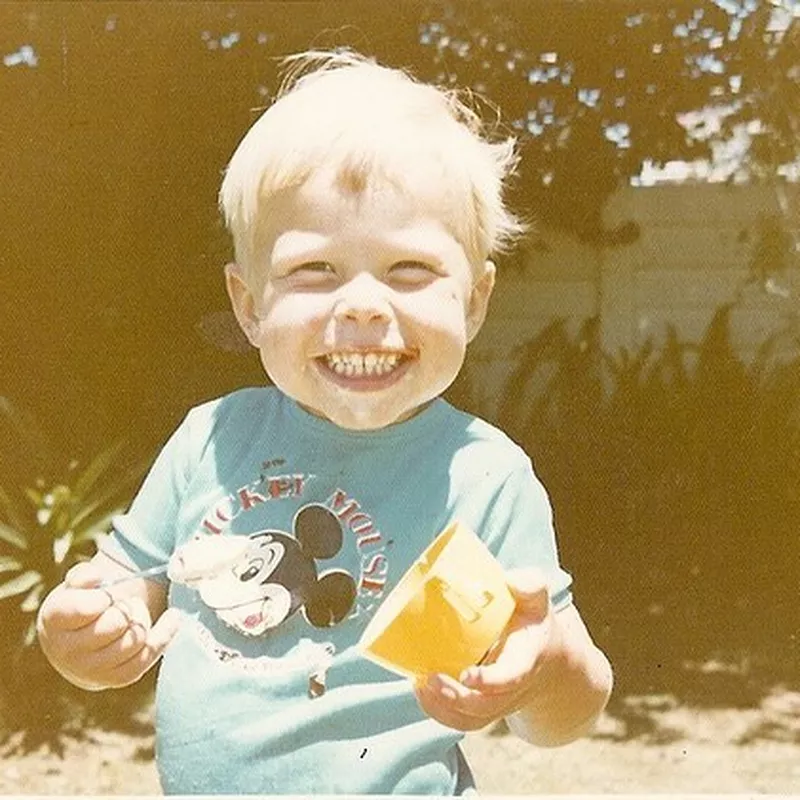
The billionaire grew up in South Africa and is the heir of an emerald farm. Having been born into a large amount of money, he went on to build upon that further and is now one of the richest men in the world.
Buying a Color TV, 1965
In what looks like some sort of advertising campaign, a couple is seen looking over a collection of color televisions with the help of a salesman.

Buying a color T.V. was not incredibly common yet, and was a distinctive feature. Today, you would be hard pressed to find a television that displayed in black and white.
Chess Prodigy Samuel Reshevsky, 1920
Samuel Reshevsky was a young chess prodigy before he even reached double digits.
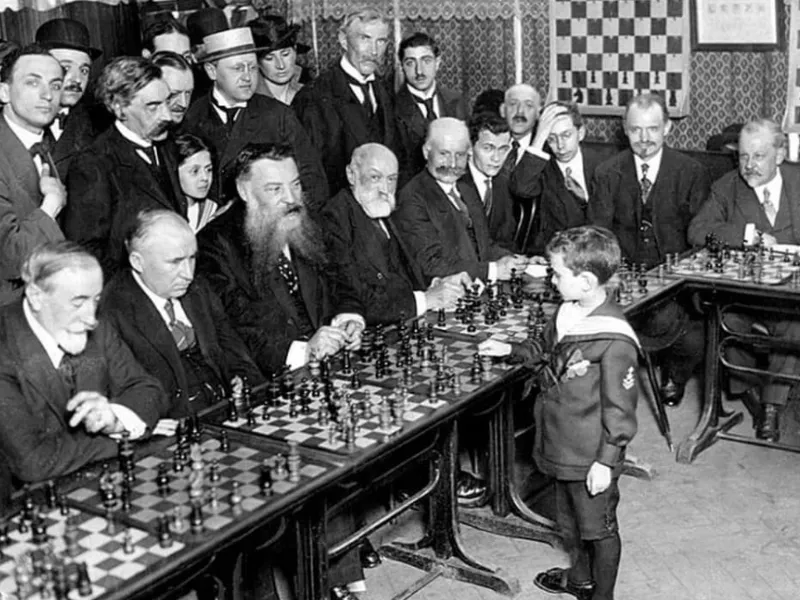
You can see the amusement and astonishment amongst the seasoned chess players as Samuel takes them on one by one.
Conrad Veidt, The Inspiration for "The Joker"
While there is some debate surrounding the origins of the infamous character “the joker” from Batman, there is agreement that actor Conrad Veidt’s likeness was used to create it.
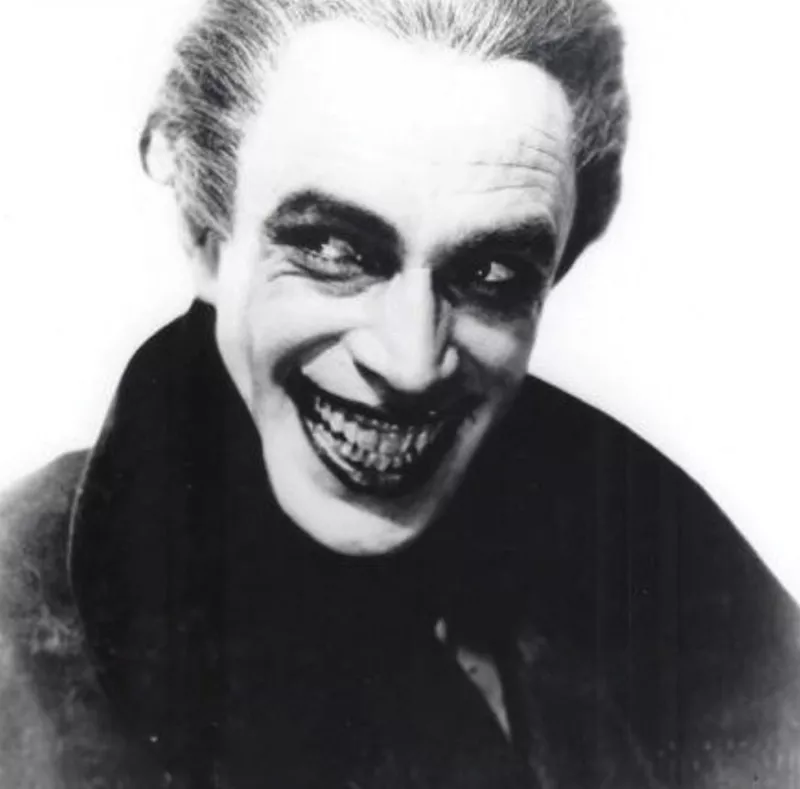
Conrad starred in a 1928 film adaptation of Victor Hugo’s The Man Who Laughs. The German’s performance was lost to time, but not by the creator of the beloved and hated character, joker.
Famous Drug Lord Pablo Escobar Outside The White House, 1981
Pablo Escobar is seen outside the White House of then president, Ronald Reagan. Pablo Escobar is standing with what we assume is his son, beyond the gates of the man who launched the “War on Drugs.”

Pablo Escobar was a Colombian drug lord who founded and ran the Medellin Cartel. His estimated net worth was around 30 billion in U.S. dollars.
Old School 'Food Truck,' 1918
An 1918 automobile was photographed parked with various food and drink sat upon it. Women surround the vehicle, either to purchase from or as the vendors.

This has all the makings of what would become popularized as the modern day food truck, where the vehicle’s main purpose is to travel with and serve food.
Helen Keller Meets Performer Charlie Chaplin, 1919
Helen Keller, who became famous for her tenacity in learning to read, write, and communicate after being born blind and deaf, meets Charlie Chaplin in 1919.
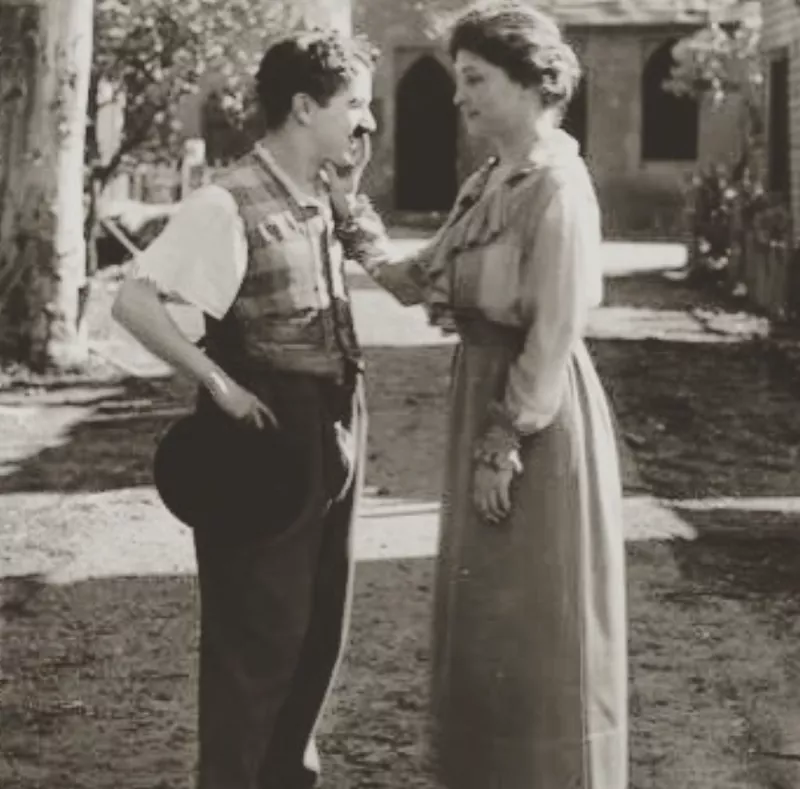
Charlie Chaplin was a world famous performer, actor, and artist. You can see Helen feeling his face to get an idea of what the star looked like.
Ladies' Scottish Climbing Club, Scotland, 1908
The Ladies Scottish Climbing Club was created by Jane Inglis Clark, her daughter Mabel Clark, and Lucy Smith by a boulder in Perthshire, 1908.

Currently, it has around 120 active members. The Ladies Scottish Climbing Club is the oldest active climbing club exclusively for women.
Famous Rapper, Notorious B.I.G., 1978
Future icon Notorious B.I.G. sits in a house in his smartly dressed suit in 1978. At the time, the destined rapper was still going by the name he was given at birth,Christopher George Latore Wallace.

Tragically, the super-star would be gunned down in the street. It is still unknown to this day who the killer is.
Waiting in the Greyhound Bus Terminal, 1969
Distractions, public transportation, and waiting. This old school photo represents modern culture still to this day. The differences are few and far between.
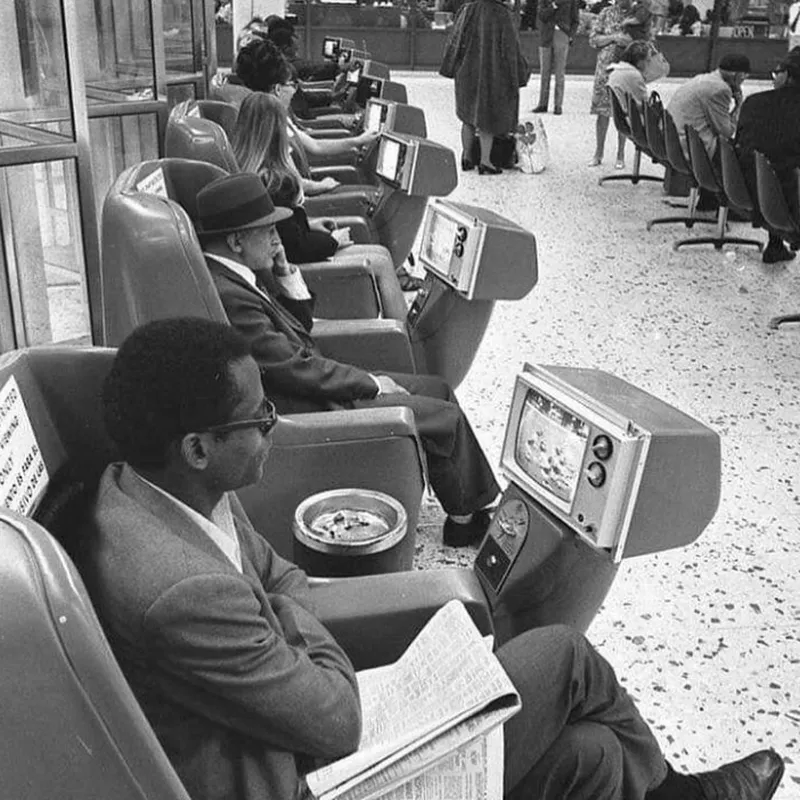
Our screens have gotten smaller, more transportation friendly, and can tell us the estimated time of arrival for the Greyhound bus while we wait.
Not Doing His Part During the Spanish Flu Pandemic, 1918
Here is something most of us are all too familiar with at this point! While the misnomer “Spanish Flu” was kicked into full gear, it was common to cover your face with a mask to avoid the spread.
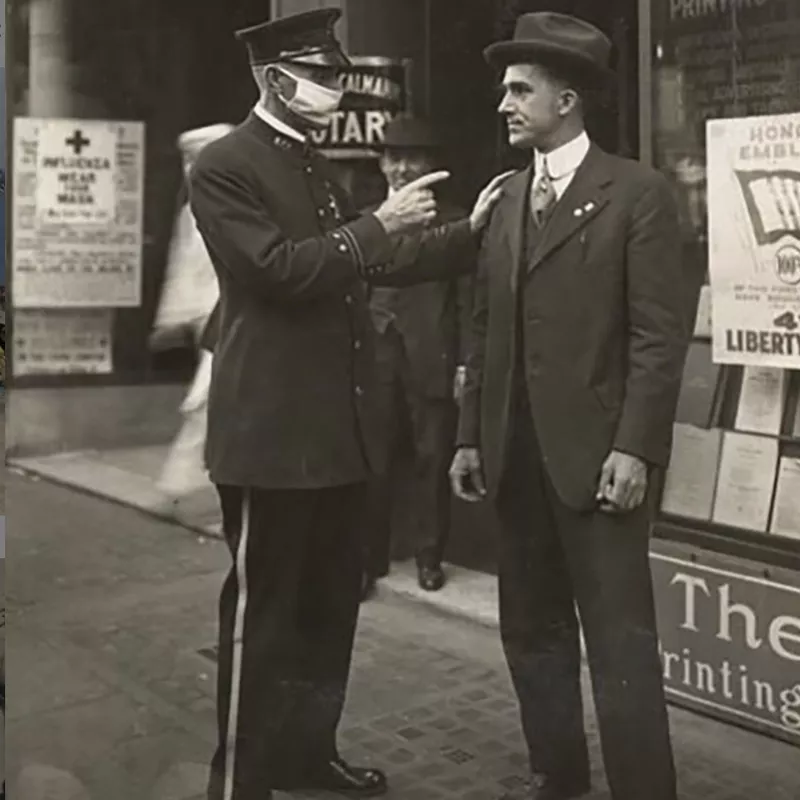
This man is clearly not on board with the wearing of a mask, a common occurrence even a century later. People don’t change!
Hidden Family Secrets
Old photographs have the ability to remind us how far we have come, but also where we want to go. In certain cases they can even manipulate how we see the future or how the past meets the present.
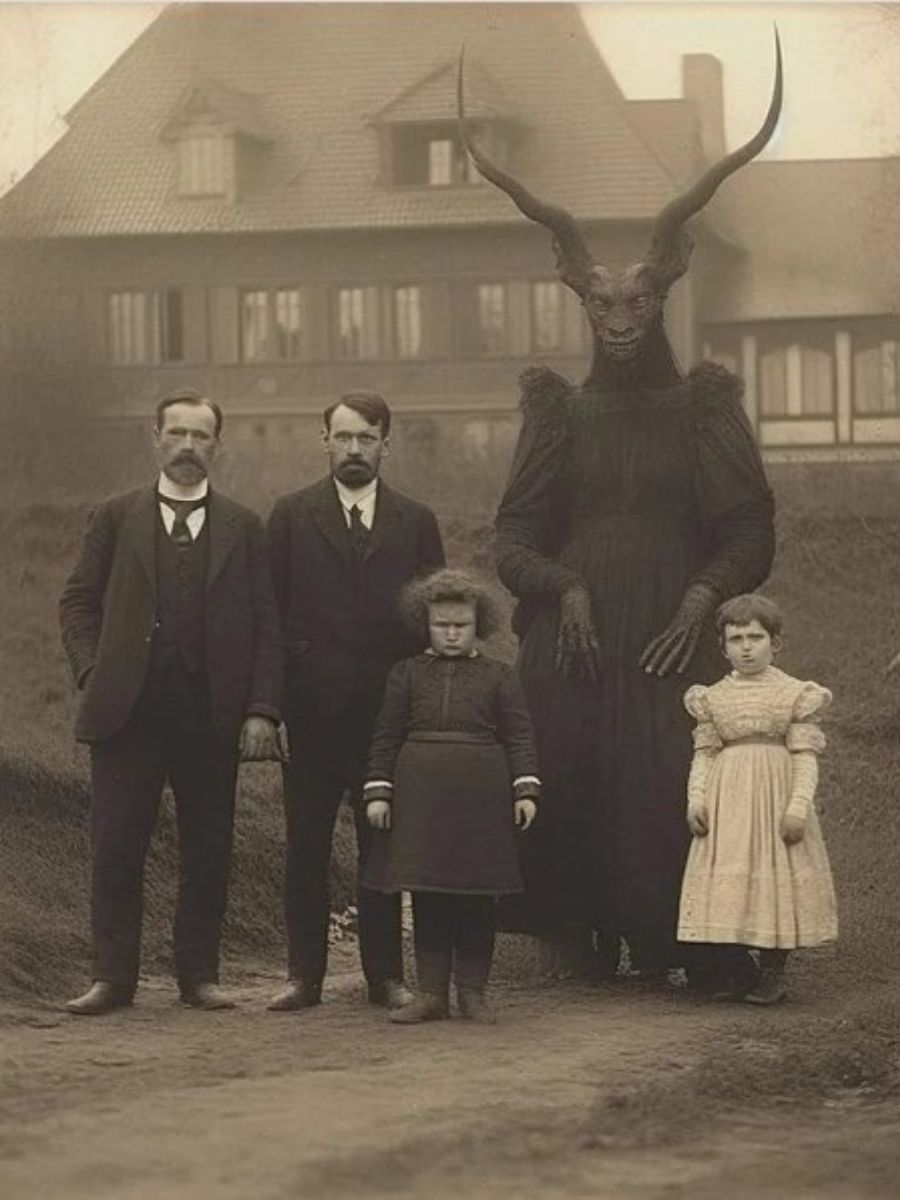
Midjourney AI magic via bigsleep//reddit
In this photo, the future of AI meets this historical family photograph quite seamlessly. You would even go as far as to question what’s real and what isn’t. We think family dinners may be a bit awkward after bringing out the family albums.
